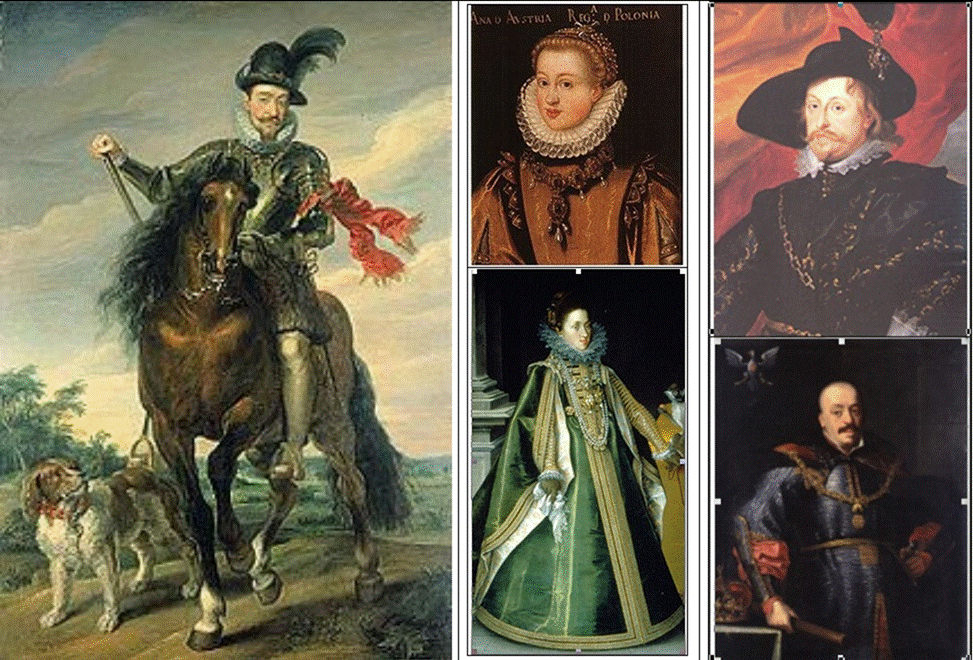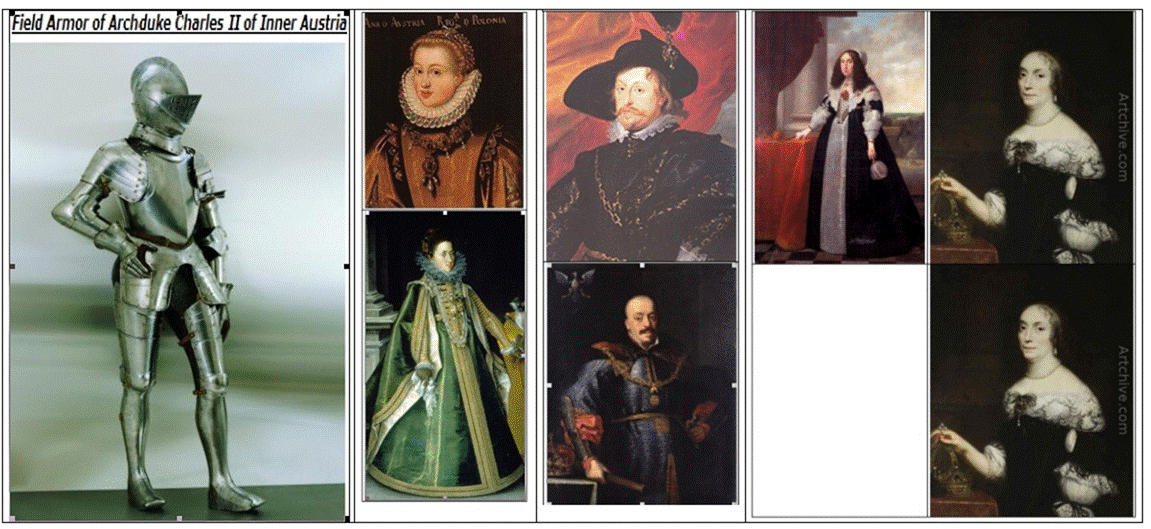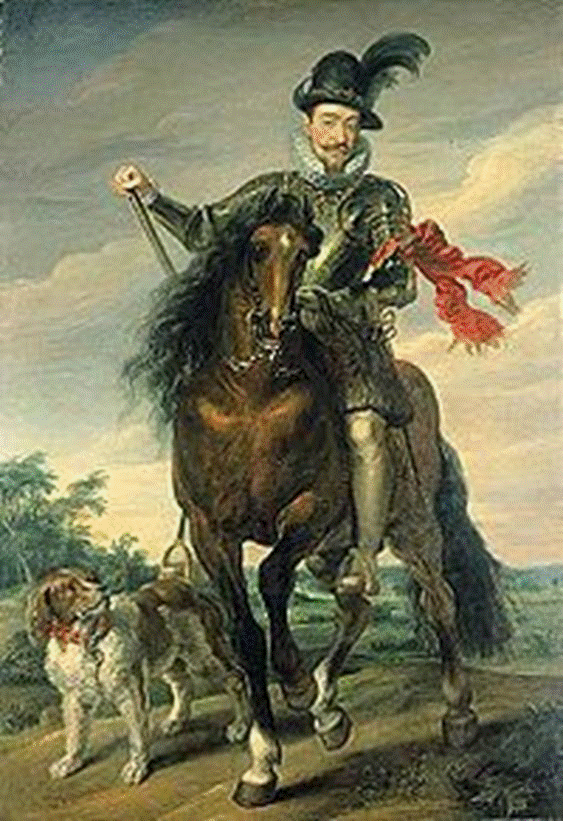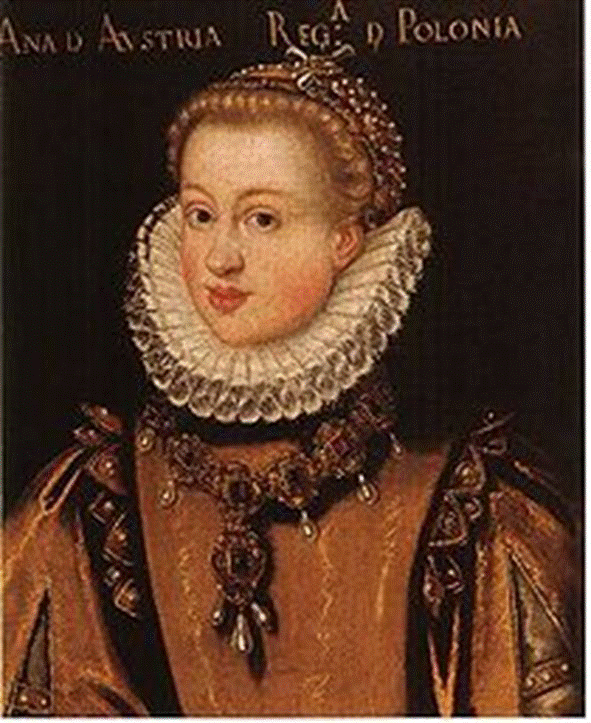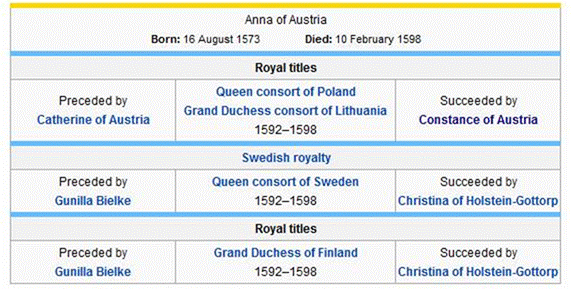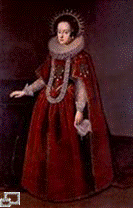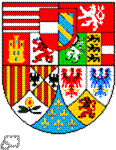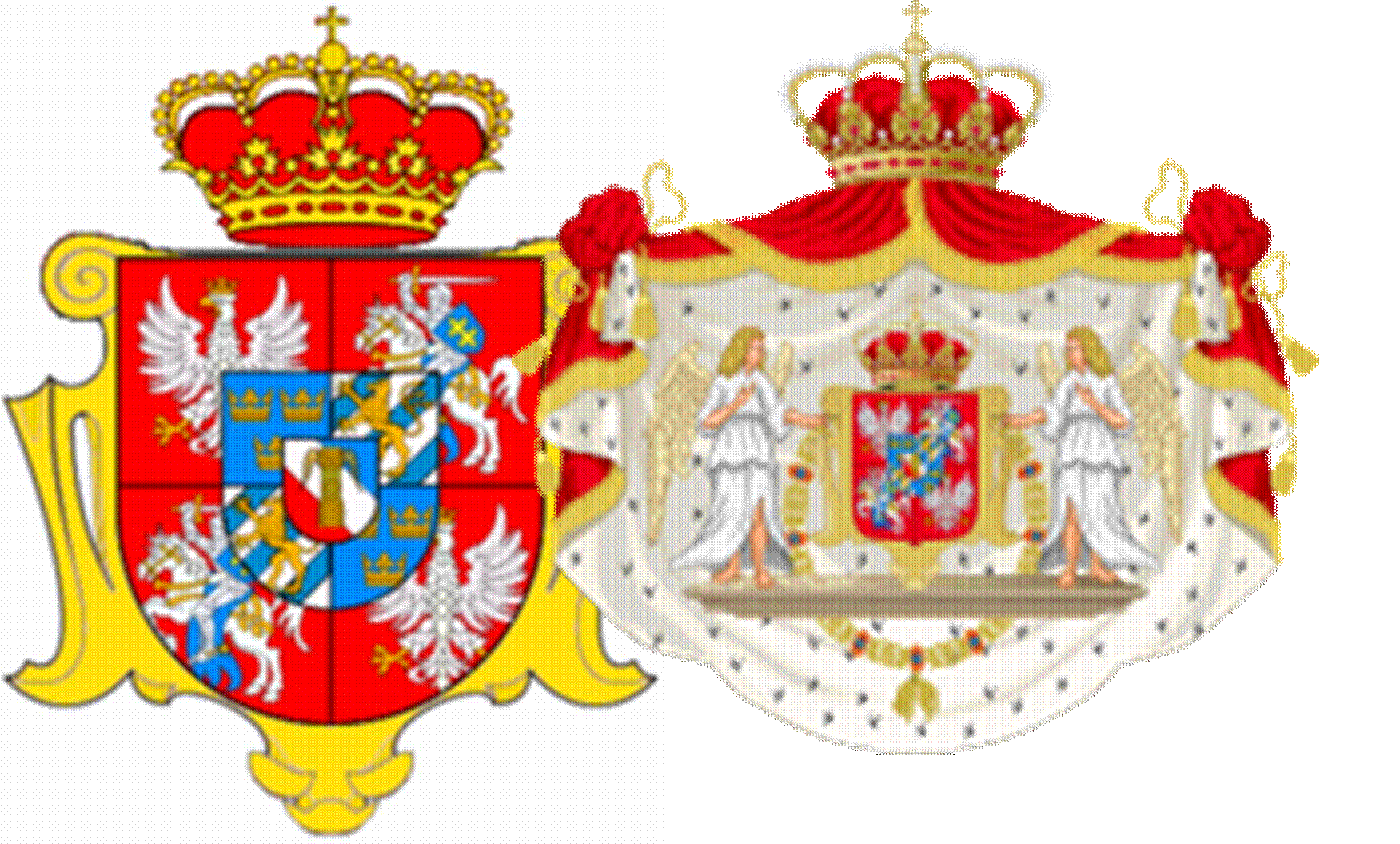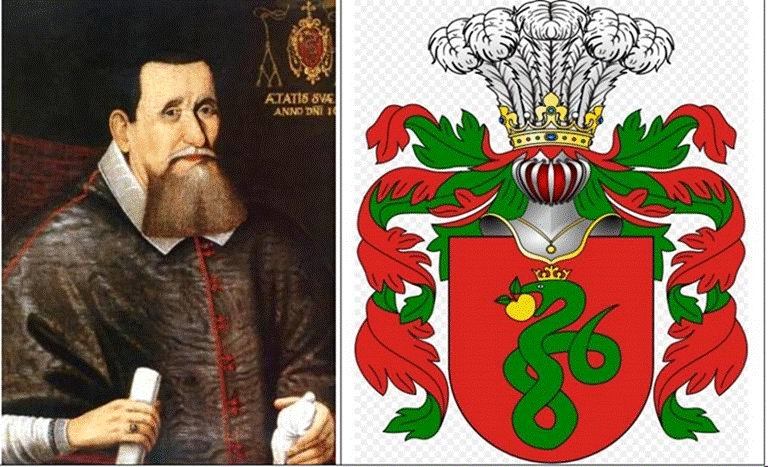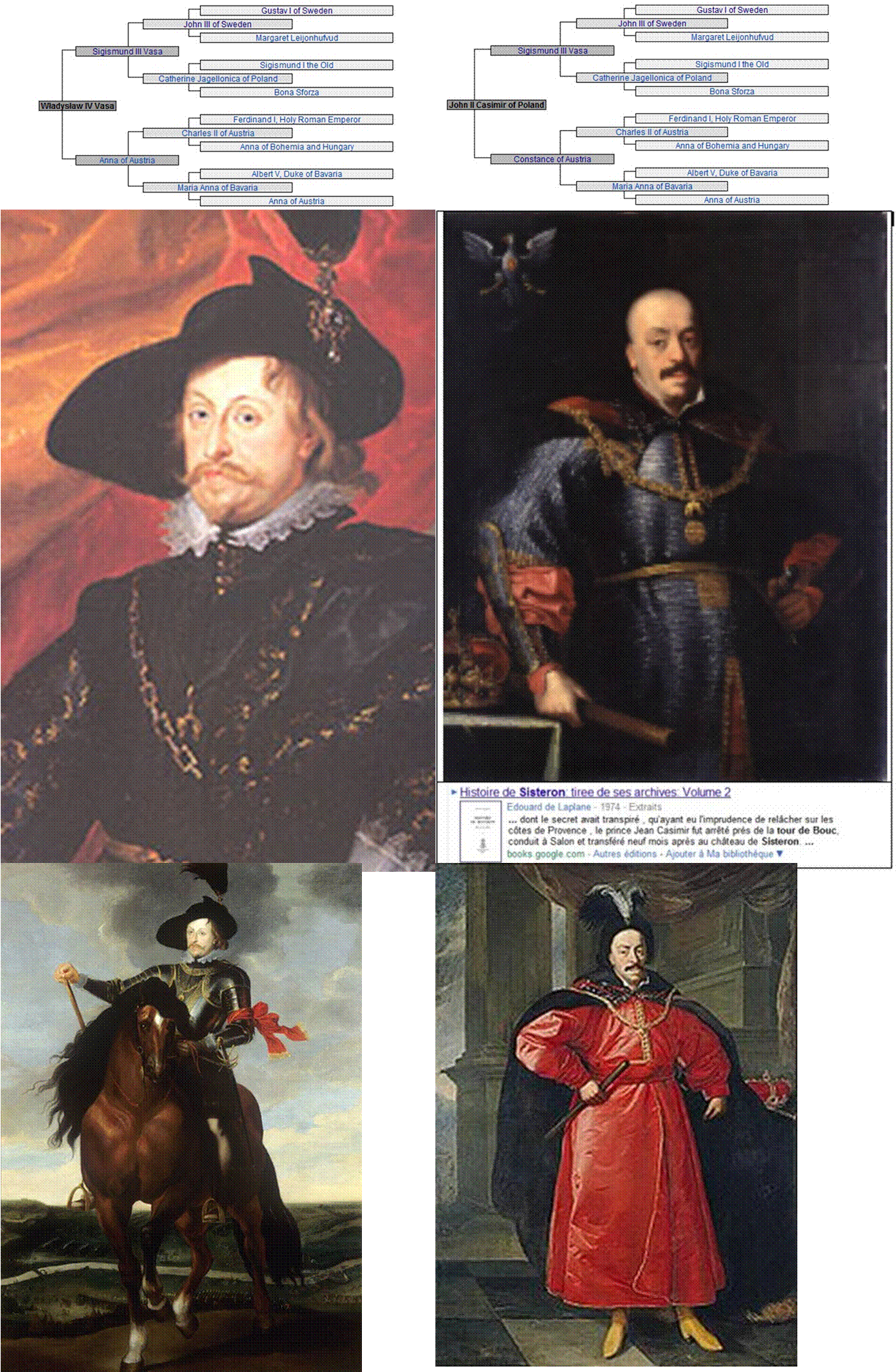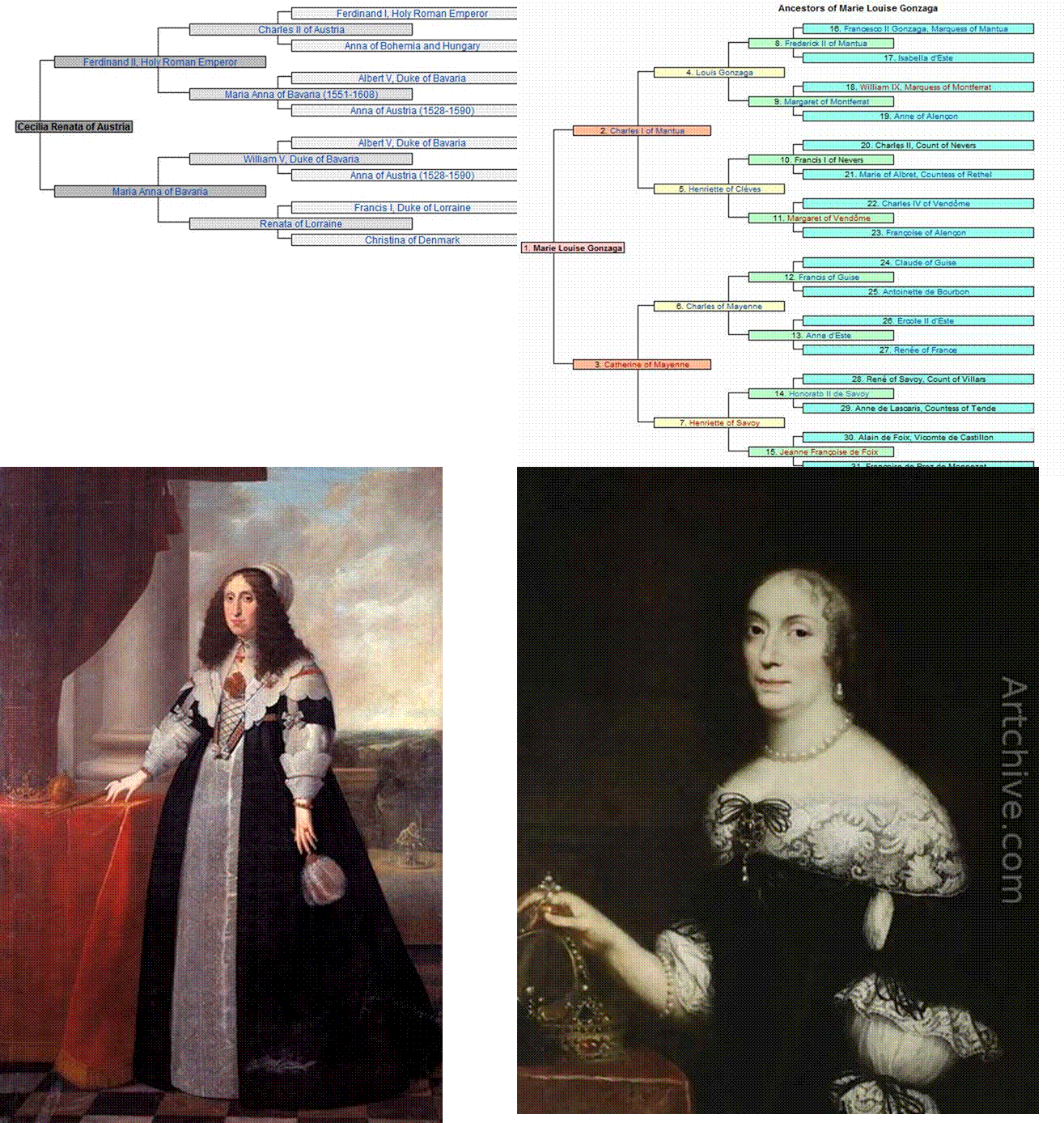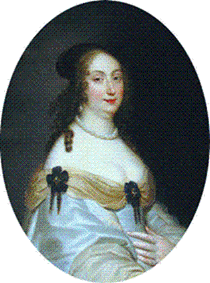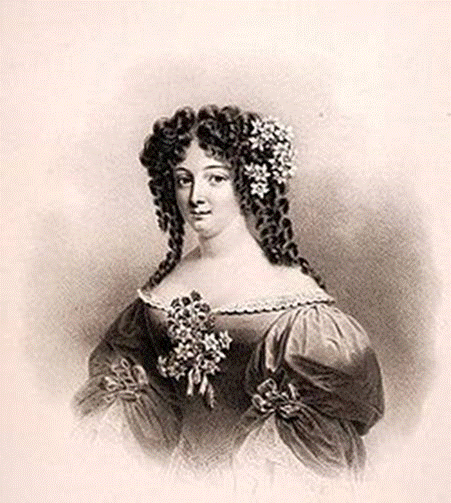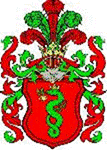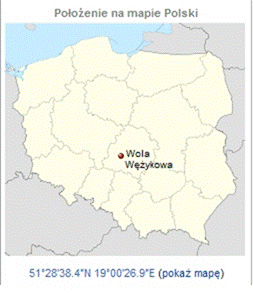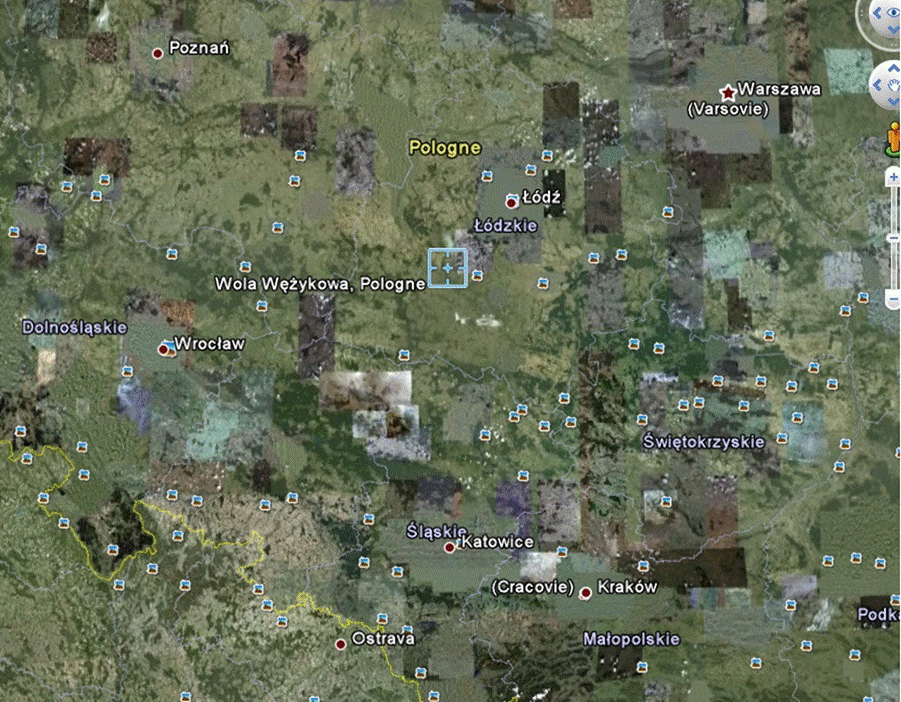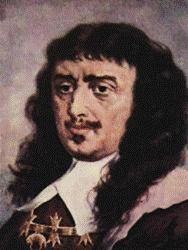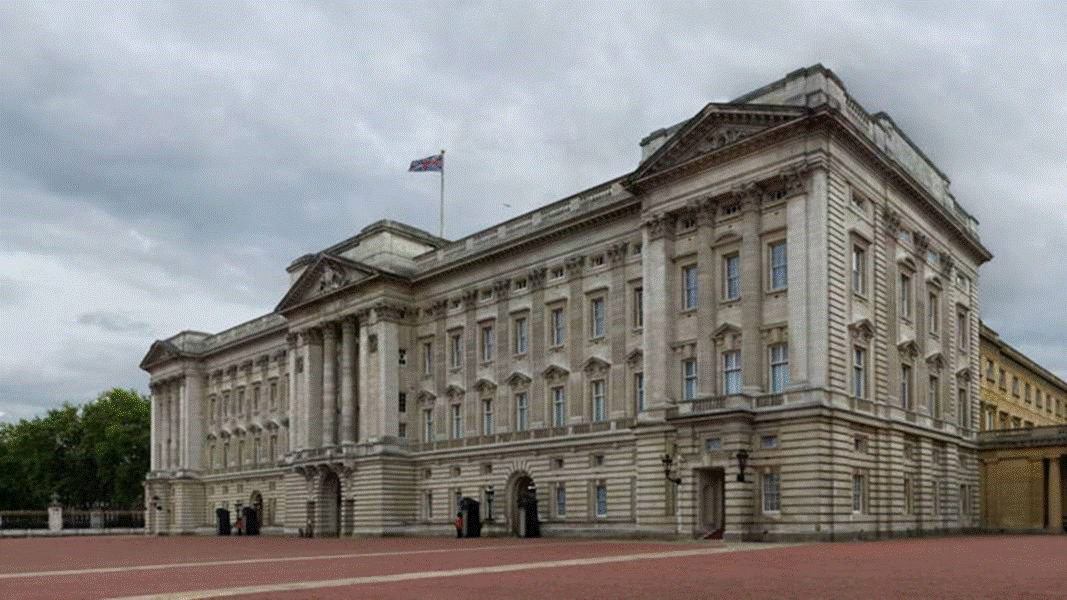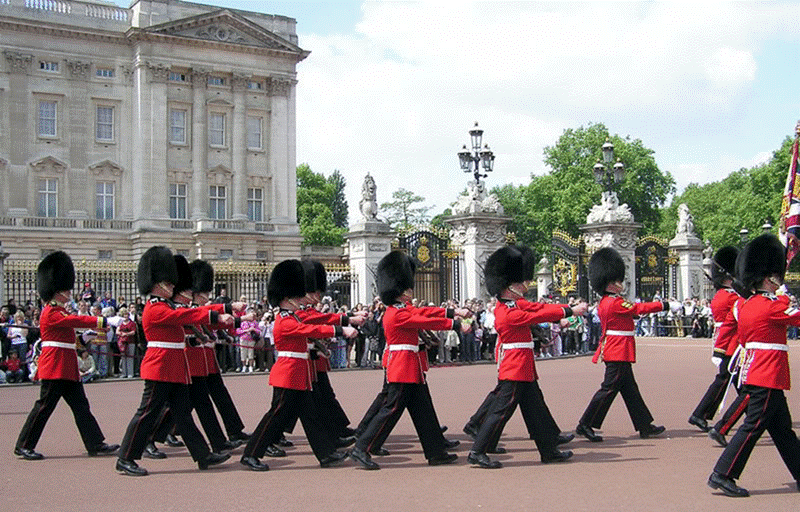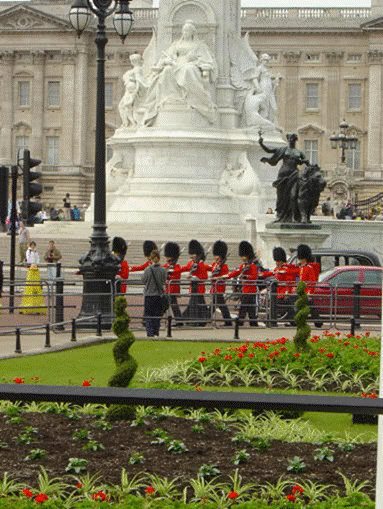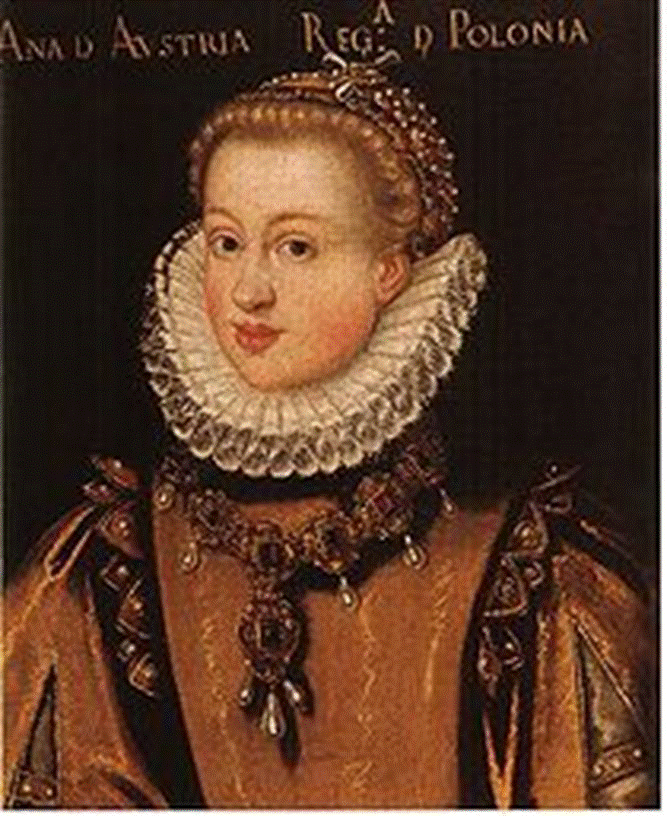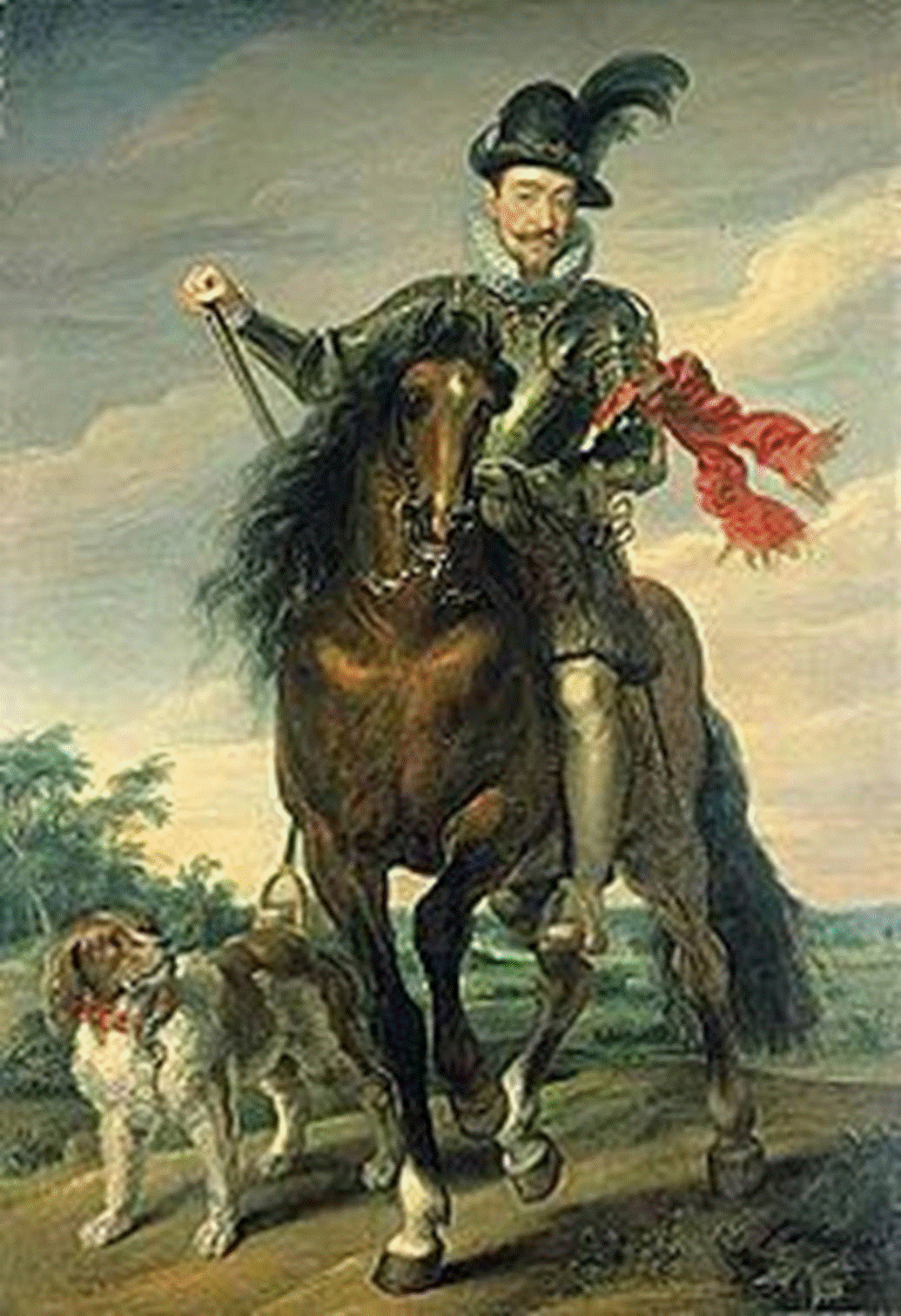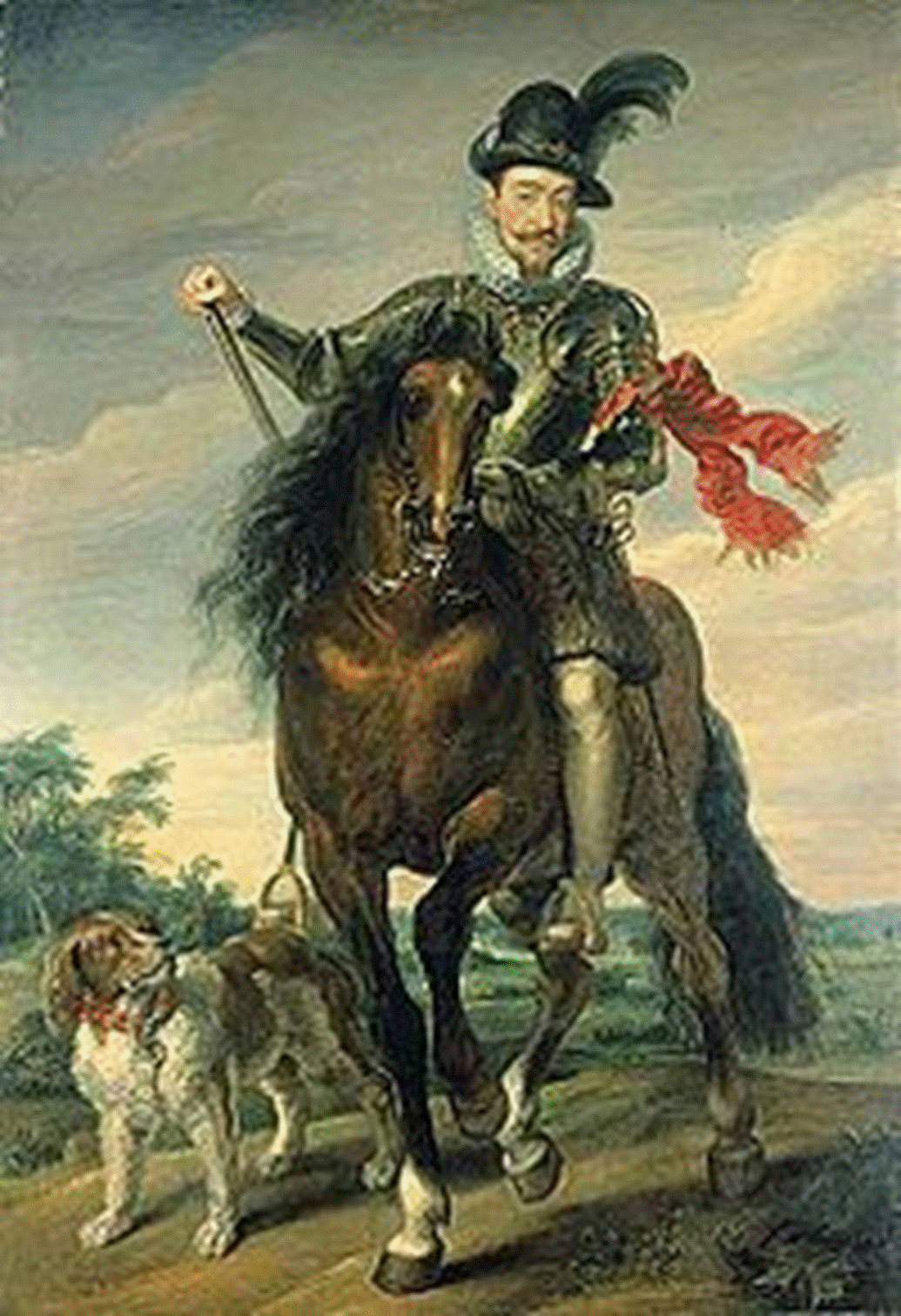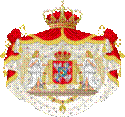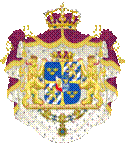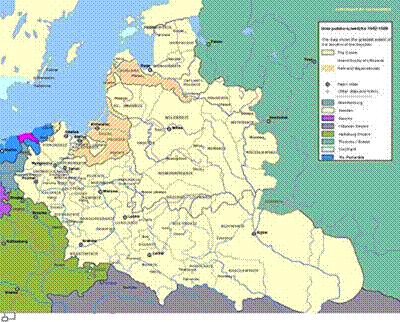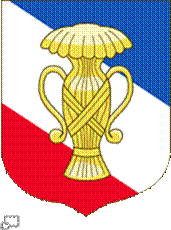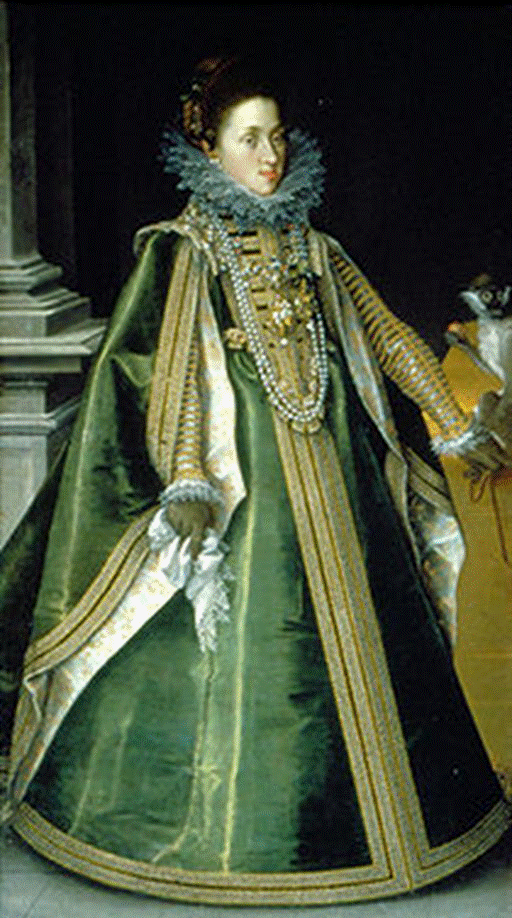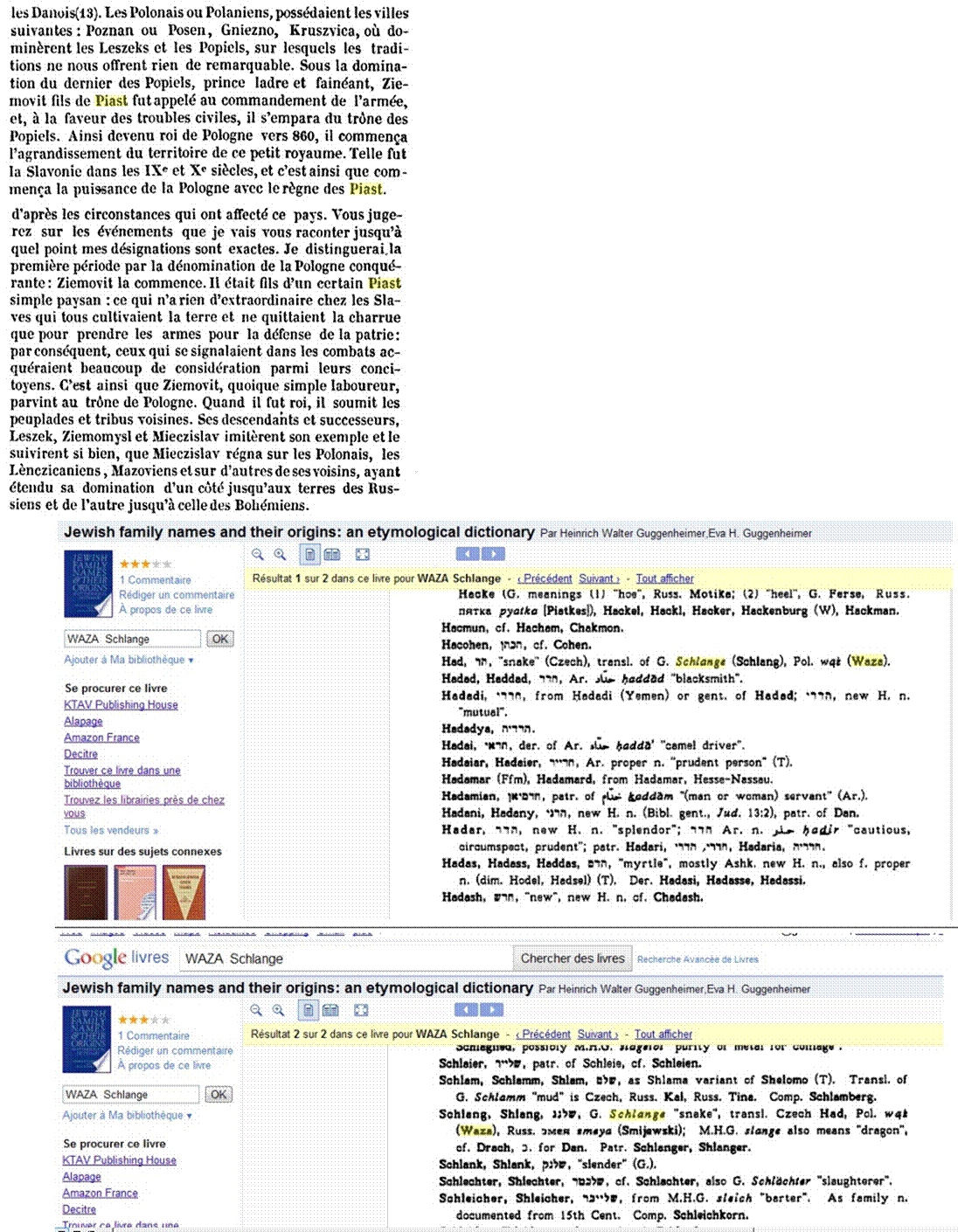http://tade.wanclik.free.fr/Kazimierz-WAZA.htm
Gustaw I
Małgorzata
Leijonhufvud Zygmunt I Bona
Waza ur. 1 I 1516
Stary Sforza
ur. 12 V
1496
zm. 26 VIII 1551
ur. 1 I 1467 ur. 2 II 1494
zm. 29 IX
1560
zm. 1 IV 1548
zm. 19 XI 1557
Jan III Katarzyna Jagiellonka
Waza ur. 1 XI 1526
ur. 21 XII 1537 zm. 16 IX 1583
zm. 17 XI
1592
1 Zygmunt III Waza 2
AnnaHabsburżanka ur. 20
VI 1566 KonstancjaHabsburżanka
ur. 16 VIII 1573 zm. 30 IV 1632
ur. 24
XII 1588
zm.
10 II 1598
zm. 10 VII 1631
OO 31 V 1592 OO 11 XII 1605
1
1
1
1
1
Anna Maria Katarzyna Władysław IV
Waza Katarzyna Krzysztof
ur.
23 V 1593
ur. 19 IV 1594
ur. 9 VI
1595
ur. IX 1596
ur. 10 II 1598
zm. 9 II
1600
zm. 16 V 1594
zm. 20 V 1648
zm. 2 VI
1597
zm. 10 II 1598
2 2
2
2
2
Jan Kazimierz Jan II Kazimierz Jan Albert Waza Karol Ferdynand Aleksander Karol Waza
ur.
26 XII 1607
ur. 22 III 1609
ur. 25 VI 1612
ur. 13 X 1613
ur. 14 XI 1614
zm.
9 I 1608
zm. 16 XII 1672
zm. 29 XII 1634
zm. 9 V 1655
zm. 19 XI 1634
2
2
Anna Konstancja Anna Katarzyna Konstancja Waza
ur.
20 I 1616
ur. 7 VIII
1619
zm.
24 V 1616
zm. 8 X
1651
Filip I
Joanna
Władysław
II
Anna
Piękny Szalona Jagiellończyk de Foix
ur. 22 VI 1478 ur. 6 XI 1479
ur. 1 III 1456
ur. po 1469
zm. 25 IX
1506
zm. 12 IV 1555
zm. 13 III 1516
zm. 26 VII 1506
Ferdynand I Anna
Habsburg Jagiellonka
ur. 10 III 1503 ur. 23 VII 1503
zm. 25 VII
1564
zm. 27 I 1547
Karol
Maria Anna Styryjski
Bawarska ur. 3
VI 1540
ur.
21 III 1551
zm. 10 VII 1590
zm.
29 IV 1608
OO 26 VIII 1571
Ferdynand Anna 2) Maria Krystyna Katarzyna Renata Elżbieta
ur.
15 VII 1572
ur. 16 VIII 1573
ur. 10 XI 1574
ur. 4 I
1576
ur. 13 III 1577
zm.
3 VIII 1572
zm. 10 II 1598
zm. 6 IV
1621
zm. 29 VI 1595
zm. 29 I 1586
Ferdynand II Karol Georgia Maksymiliana
Eleonora Maksymilian Ernest
ur.
9 VII 1578
ur. 17 VII 1579
ur. 22 III 1581
ur. 25 IX 1582
ur. 17 XI 1583
zm.
15 II 1637
zm. 17 V 1580
zm. 20 IX 1597
zm. 28 I 1620
zm. 18 II 1616
Małgorzata 1) Leopold V Konstancja 2) Maria Magdalena Karol
ur.
25 XII 1584
ur. 9 X 1586
ur. 25 XII 1588
ur. 7 X
1589
ur. 7 VIII 1590
zm. 3 X
1611
zm. 13 IX 1632
zm. 10 VII 1631
zm. 1 XI
1631
zm. 28 XII 1624
I, Holy Roman
Emperor
Ancestry
and Anna
of Bohemia and Hungary(1503–1547). Anne was the only daughter
of King Ladislaus II of Bohemia and Hungary and his
wife Anne de Foix. Her maternal grandparents were Albert V,
Duke of Bavaria and Anne Habsburg of Austria. Ancestors of
Sigismund III Vasa[show]
Constance was also a
younger sister of Ferdinand II, Holy Roman
Emperor, Margaret of Austria, Leopold V of
Austria and Anna of Austria. [edit]Marriages
and descendants
Her older sister
Anna was the first wife of king Sigismund III Vasa. After her death
Constance and Sigismund III Vasa were married on December 11, 1605. Sigismund married
twice. Firstly, on 31 May 1592, to Anna
of Austria (1573–1598), daughter of
Archduke Charles II of Austria
They had seven children:
1. John
Casimir (25 Dec 1607-14 Jan 1608) (1540–1590)
and his wife Maria Anna of Bavaria (1551-1608). They had five
children:
2. John Casimir (1609–1672),
(reigned 1648-1668 as John Casimir II Vasa of Poland) 1. Anna Maria (23 May
1593–1600)
3. John Albert (1612–1634) 2. Catherine (9 May
1594–1594)
4. Charles Ferdinand (1613–1655) 3. Vladislaus (1595–1648),
(reigned 1632–1648 as Władysław IV Waza of Poland)
5. Alexander Charles (1614–1634) 4. Catherine
(27 September 1596–1597)
6. Anna Constance (26 Jan 1616-24 May
1616) 5. Christopher
(10 February 1598–1598)
7. Anna
Catherine Constance (1619–1651) And secondly, on 11 December 1605, to
his first wife's sister, Constance of
Austria (1588–1631). They had seven children:
1. John Casimir (25 December
1607 – 14 January 1608)
2. John
Casimir (1609–1672), (reigned 1648–1668 as John Casimir II Vasa of
Poland)
3. John Albert (1612–1634)
4. Carles
Ferdinand (1613–1655)
5. Alexander
Charles (1614–1634)
6. Anna Constance (26 January 1616
- 24 May 1616)
7. Anna
Catherine Constance (7 August 1619 – 8 October 1651) was the first wife
of Philip William, Elector Palatine.
[edit]
Zygmunt WASA Anna of Austria
Sigismund III
Vasa (Polish: Zygmunt III Waza, Lithuanian: Zigmantas
Vaza, English exonym: Sigmund; 20 June 1566 – 30 April
1632 N.S.) was King of Poland and Grand Duke of
Lithuania, a monarch of the united Polish-Lithuanian
Commonwealth from 1587 to 1632, and King of Sweden (where he
is known simply as Sigismund) from 1592 until he was deposed in 1599. He
was the son of King John III of Sweden and his first wife, Catherine
Jagellonica of Poland. Anne was a daughter of Charles II of
Austria and Maria Anna of Bavaria. Her paternal grandparents
were Ferdinand I, Holy Roman Emperor and Anne of
Bohemia (1503–1547), daughter of King Ladislaus II of Bohemia and Hungaryand
his wife Anne of Foix-Candale.
Elected to the throne of
the Polish-Lithuanian Commonwealth, Sigismund sought to create
a personal unionbetween the Commonwealth and Sweden (Polish-Swedish
union), and succeeded for a time in 1592. After he had been deposed in 1599
from the Swedish throne by his uncle, Charles IX of Sweden, and a
meeting of the Riksens ständer (Swedish Riksdag), he spent much of
the rest of his life attempting to reclaim it. Anne became the first
wife of Sigismund of Poland and Sweden on 31 May 1592. This
marriage was opposed by many nobles (szlachta) of the Polish-Lithuanian
Commonwealth, who were opposed to the alliance with the Habsburgs that
Sigismund pursued.
Sigismund remains
a highly controversial figure in Poland. His long reign coincided
with the apex of the Polish-Lithuanian Commonwealth's prestige, power
and economic influence. On the other hand, it was during his reign that the
symptoms of decline leading to the Commonwealth's eventual demise surfaced.
Popular histories, such as the books of books of Paweł Jasienica,
tend to present Sigismund as the principal source of these destructive
processes; whereas academic histories are usually not damning of him.
However, the question of whether the Commonwealth's decline was caused by
Sigismund's decisions or had its roots in historical processes beyond his
personal control, remains a highly debated topic. When Sigismund sent
a diplomatic mission, led by Cardinal Radziwill,
to Prague for his bride, the anti-Habsburg party
with chancellor Jan Zamoyski guarded the borders to prevent
the Archduchess from entering the country. Anne evaded the guards, arrived
in Kraków and was crowned in May 1592
by Primas Karnkowski as the Queen of Poland. (Later during her
lifetime the capital of the Commonwealth was moved from Kraków
to Warsaw.)
He was commemorated
in Warsaw with Zygmunt's Column, commissioned by his son and
successor, Władysław IV. In 1594, she followed her spouse to Sweden,
where she was crowned as the Queen of Sweden in Uppsala the 19
February. The Poles demanded that she leave her daughter behind her as
security in Poland during their stay in Sweden, and she was afraid that the
Swedes would demand the same when she returned to Poland, if she gave birth
during her stay in Sweden. 19 April 1594, she gave birth to a daughter, whose
baptism was elaborately celebrated at the Swedish court, but the child died
soon after. During her stay in Sweden, she became involved in a conflict with
Dowager Queen Gunilla Bielke. She was regarded as quite polite but
distant and depressive during her stay. She did not speak Swedish, and she
regarded the Swedish people as heretics and rebels and only showed
herself in public when she was forced to. At her departure from Sweden in
July 1594, she was grantedLinköping
, Söderköping and Stegeborg on
the condition that she respect the Protestant belief within in these feifs.
Anne and Sigismund fell in love and Anne gained the
friendship and respect of many of her former enemies with her politeness and
culture.[citation needed]
CONSTANCE OF AUSTRIA
Konstancja królowa Polski
Herb Konstancji Austriaczki
Konstancja
Habsburżanka (ur. 24 grudnia 1588 w Grazu,
zm. 10 lipca 1631 w Warszawie) – królowa Polski i Szwecji
wielka księżna Litwy, córka arcyksięcia Karola
Styryjskiego i Marii Anny Bawarskiej, która była
siostrzenicą jej ojca.
Jej dziadkami ze strony ojca byli
więc: cesarz Ferdynand I Habsburg i Anna Jagiellonka,
natomiast ze strony matki:Albert V, książę Bawarii
oraz Anna Habsburg.
Miała czternaścioro
rodzeństwa; w tym cesarza Ferdynanda II, Małgorzatę
Austriacką, arcyksięcia Leopolda V i Annę
Habsburg - pierwszą żonę Zygmunta III Wazy, królową Polski i Szwecji.
Po śmierci Anny 11
grudnia 1605 Zygmunt III ożenił się z
Konstancją. Zaraz po ślubie królowa zdobyła wpływ na
politykę króla. Stała się gorącą rzeczniczką
Habsburgów na Polskim dworze. Wpływała na rozdawanie urzędów
dworskich, duchownych i senatorskich. Starała się w ten sposób
tworzyć silne stronnictwo dworskie. Aby wzmocnić swoją
pozycję żeniła swoje dwórki ze znaczniejszymi magnatami, m.in.
Stanisławem Albrychtem Radziwiłłem.
Królowa była bardzo wykształcona. Oprócz
ojczystego języka niemieckiego znała łacinę,
hiszpański, włoski i polski. Nauczyła się go zaraz po
swojej koronacji, ale rzadko się nim posługiwała. Była
żarliwą katoliczką, słuchała dwóch mszy dziennie,
czytała modlitewniki i brewiarze. Chciała zapewnić tron
swojemu najstarszemu synowi Janowi Kazimierzowi, z pominięciem
Władysława, syna Zygmunta III z pierwszego
małżeństwa. Pomysł ten nie został zrealizowany, a
królowa zmarła na udar 10 lipca 1631. Wcześniej
kupiła dobra żywieckie, aby po śmierci stały
się zabezpieczeniem jej synów i sfinansowała budowę kilku
pałaców w Warszawie (wszystkie spłonęły, lub zostały
zniszczone) dla swoich dzieci. Była także opiekunką
księży, malarzy i poetów. Została pochowana w podziemiach
kaplicy Wazów w katedrze wawelskiej. Była kobietą
zapobiegliwą.
Królowa Konstancja z synem Janem Kazimierzem
, (from
1626), Primate of Poland and Interrex (for 9 months)
after the death of king Sigismund III Vasa in 1632, before
the royal election of Władysław IV Waza.
As
the Interrerx he supported improving the procedures of the royal elections.
He was a political ally of Polish queen consort Constance of Austria,
and took part in reform of church law in Poland.
He authored Synodus provincialis Gnesnensis A.D. 1628
die 22 mai celebrata (1629), Synodus provincialis Gnesensis(1634),
and Constitutiones Synodorum Metropolitanae Ecclesiae Gnesnensis
Provincialium (1630).
De Wąż enl’an 0962 le nom est
passé par Wanc en 1381 . Il existait sous la forme Wanclik vers
1600.Les variations locales étaient fonction de la langue d’usage et des pouvoirs politiques et
religieux. Il y a eu aussi des érradications physiques au cours des guerres
de religions lorsque on voulait absolument détruire l’autre. Jan
Kazimierz Waza Erikson a été conduit ŕ choisir de devenir jésuite
pour sortir de prison. Il a męme été nommé Cardinal par le Pape Innocent X
This article is about the 17th century king of Poland and
Grand Duke of Lithuania. For another person sometimes referred to as
Władysław IV of Poland, see the 14th
century Władysław I the Elbow-high John II
Casimir (Polish: Jan II Kazimierz Waza; German: Johann
II. Kasimir Wasa; Lithuanian: Jonas Kazimieras Vaza (22 March
1609 – 16 December 1672) was King of Poland and Grand Duke of
Lithuania[1] during the era of the Polish-Lithuanian Commonwealth,
Duke of Opole in Upper Silesia, and titular King of
Sweden 1648-1660. In Poland, he is known and commonly referred as Jan
Kazimierz. His parents were Sigismund III Vasa(1566–1632)
and Constance of Austria (1588–1631). His older brother, and
predecessor on the throne, wasWładysław IV Vasa
Władysław IV
Vasa (Polish: Władysław IV
Waza, Latin: Vladislaus IV Vasa and Ladislaus IV
Vasa, Lithuanian:Vladislovas IV Vaza, June 9, 1595 – May 20, 1648) was a
Polish and Swedish prince from the House of Vasa, the son
of Sigismund III Vasa and his wife, Anna of Austria (also
known as Anna of Habsburg). Władysław IV reigned
as King of the Polish-Lithuanian Commonwealth from
November 8, 1632, to his death in 1648. In 1610, the teenage
Władysław was
elected Tsar of Russia by Seven Boyars, but did not
assume the Muscovite throne due to his father's opposition and
popular uprising in Russia; he used the title of Grand Duke
of Muscovy until 1634. .
Related to the Habsburg rulers of the Holy Roman
Empire he was the third and last monarch on the Polish throne from
the House of Vasa. He was the last ruler of Polish-Lithuanian
Commonwealth bearing a dynastical blood of House of
Gediminas and a branch of it, the Jagiellons, although from female
line.
Władysław managed to prevent the Commonwealth
becoming embroiled in the bloody Thirty Years' War that
ravaged western Europe during his reign, and was fairly successful
in defending the Commonwealth from invasions. He supported religious
tolerance and carried out military reforms. He failed, however, to
realize his dreams of regaining the Swedish crown, or gaining fame through
conquest of the Ottoman Empire, or to reform and strengthen the
Commonwealth. Contents
His death marked the end of the Golden Age of the
Commonwealth, as conflicts and tensions that Władysław had failed
to resolve led in 1648 to the greatest of
the Cossack uprisings—the Khmelnytsky Uprising—and to Swedish
invasion ("The Deluge"). [hide]
· 1 Royal
titles
§ Royal
titles in Latin: Vladislaus Quartus Dei gratia rex Poloniae, magnus dux
Lithuaniae, Russiae, Prussiae, Masoviae, Samogitiae, Livoniaeque, necnon
Suecorum, Gothorum Vandalorumque haereditarius rex, electus magnus dux
Moschoviae. · 2 Biography
§ English
translation: Vladislaus IV, by the grace of God, king of Poland,
grand duke of Lithuania, Ruthenia, Prussia, Masovia, Samogitia, Livonia,
and also hereditary king of
the Swedes, Goths and Vandals, elected Grand Duke
of Moscow. · 3 Legacy
As Władysław Zygmunt Waza-Jagiellon, in 1632 he
was elected King of Poland. By paternal inheritance, he legally succeeded
as King of Sweden. He was also heir to one of the several Christian
claims to the title of King of Jerusalem, but the Kingdom of
Jerusalem had been defunct for several centuries. His titles were the
longest of those of any Polish king ever.[1] · 4 Patron
of arts
· 5 Ancestors
· 6 References
· 7 See
also
Jean II Casimir Vasa (Jan Kazimierz
Waza) est un roi polonais qui régna de 1648 ŕ 1668 durant
son rčgne laPologne perdit de grandes parties de son territoire par ses
combats contre la Russie, la Sučde, les Tatars et
l'Ukraine.
Né
le 22 mars 1609 ŕ Cracovie, le second fils
de Sigismond III Vasa combattit la France avec
les Habsbourgpendant la guerre de Trente Ans. Arręté
en France alors qu'il voyageait vers l'Espagne,pour devenir Amiral
de la flotte d’Espagne et vice-roi du Portugal il reste deux ans en prison
(1638–1640) ŕ Sisteron en Provence. Libéré sous condition d’abandonner toute
ambition politique il entre chez les Jésuites. Le pape Innocent X le
fait Cardinal,mais il renonce au bout d'un an.(En 1640 , le
peintre Anton Wanclik, qui vivait ŕ Buckingham ŕ la cour de Charles
1er et de la sśur de Louis XIII vit dans son entourage
pendant plusieurs mois.)
A la mort de son frčre le roi Ladislas IV Vasa, il est
élu en 1648 au trône de Pologne et obtint une dispense pour épouser
la veuve de celui-ci Marie Louise de Gonzague-Nevers.
Malgré son désir de négocier avec
les cosaques ukrainiens, il dut continuer la lutte sous la pression
de la noblesse polonaise désirant agrandir leur possession. il gagna
la bataille de Beresteczko contre les forces cosaques et tatars (20-30
juin 1651), mais les combats reprirent quand les cosaques s'alličrent avec la
Russie. En męme temps, la Sučde envahit le Pologne.
Par traité, il renonça ŕ ses droits sur la couronne de Sučde
et céda la Livonie. La guerre contre la Russie fut terminé par
la tręve d'Andrusovo. Il est d'abord défait par Charles-Gustave,
roi de Sučde, ŕ Varsovie, 1656.
Le 19 septembre 1657, il signe le traité
de Welawa par lequel il renonce ŕ la souveraineté sur le duché dePrusse.
Il repoussa ensuite Charles-Gustave, roi de Sučde, et conclut
le traité d'Oliwa, 1660. Ses armées, commandées par Sobieski,
vainquirent les Tartares en 1661.
Cependant, ayant perdu son épouse en 1667, et écśuré
par la guerre et la révolte de la dičte, il abdique le 16
septembre 1668. Il se retira en France en 1670 et devient abbé titulaire
de Saint-Germain-des-Prés et de Saint-Martin de Nevers. Il
mourut le 16 décembre 1672 ŕ Nevers et fut
inhumé dans l'église abbatiale
de Saint-Germain-des-Prés ŕ Paris.
Marié le 14
septembre 1672 ŕ Paris, avec Françoise Marie Mignot (1624-1711). Il rencontra
la riche veuve du maréchal François de L'Hospital dans l'un des
salons parisiens qu'il fréquentait. Ils se maričrent ŕ Paris, rue des Fossés
Montmartre, mais le mariage ne fut jamais déclaré et ils eurent une fille..
Elle était ŕ Nevers prčs de son mari lorsqu'il mourut trois mois aprčs le
mariage.
Archduchess Cecilia
Renata of Austria (German: Cäcilia
Renata; Polish: Cecylia Renata; 16 July 1611 – 24 March 1644)
was Queen of Poland as consort to the Polish-Lithuanian
Commonwealth's King Władysław IV Vasa. Marie
Louise Gonzaga (known in Poland as Ludwika Maria; 18 August 1611 -
10 May 1667) was queen consort to two Polish
kings: Władysław IV Vasa, and John II Casimir Vasa. She
was born in Paris (or Nevers) toCharles I, Duke of
Mantua
, and Catherine of Guise.
Marriages After having spent her childhood with her
mother, she was to have married Gaston, Duke of Orléans, in 1627, but
King Louis XIII of France opposed the marriage and subsequently
imprisoned her in the Vincennes fortress and later in
a convent.
Władysław was married twice. At the very
beginning of 1634, or even at the end of 1633 Władysław asked
pope Urban VIIIfor permission (or better to say promise of permission,
since no name was included) to marry a Protestant princess. The pope refused,
and speed of this refusal Władysław treated as insult. At the
beginning of 1634 Władysław sent Aleksander
Przypkowski with a secret mission to king of England Charles
I. Envoy had to discuss king's marriage plans and English help for
reconstruction of Polish fleet. King's marriage plans were discussed on
Senate meeting on 19 March 1635, but only four bishops were present and only
one supported plan. There exist also other documents concerning planned
marriage of Władysław and Princess Elisabeth of Bohemia,
Princess Palatine (daughter of Frederick V, Elector Palatine, also
known as the "Winter King"). However, when he was
"cheated" during peace talks with Sweden in 1635 - by Polish
magnates and nobles, many of them Protestant, by Protestant Swedes and by
Protestant representatives of other foreign monarchs against a new war
between the Commonwealth and Sweden, a war Władysław pushed for -
Władysław changed his mind about marrying a Protestant and decided
to seek support from the Catholic factions, especially the Habsburgs. The first
proposal that she marry the King of Poland, Władysław IV Vasa,
was made in 1634, but Władysław eventually married Cecilia
Renata of Austria.
Another marriage briefly considered in 1636 was to Anna
Wiśniowiecka, daughter of Michał Wiśniowiecki and
sister ofJeremi Wiśniowiecki In 1640,
Marie Louise met Władysław's brother, John Casimir, and
started her literary salon in Paris.
, of the powerful
Polish magnate family of Wiśniowiecki. Although Władysław
was quite supportive of the marriage, it was blocked by the Sejm. Anna
eventually married Zbigniew Firlej between 1636 and 1638. Cecilia Renata died in 1644, and on 5 November 1645 Marie
Louise married Władysław IV by proxy, John Casimir
representing his brother. She had to change her name from Marie Louise to
Ludwika Maria in order for the marriage to take place, as in Poland the
name Maria was at that time considered reserved only for Mary,
mother of Jesus.
Ferdinand II, Holy Roman Emperor's proposal of marriage
between Władysław and Archduchess Cecilia Renata of
Austria(sister of future Ferdinand III, Holy Roman Emperor) arrived in
Warsaw somewhere during spring 1636. King's trusted, father Walerian
(of Franciscan religious order) and voivode Kasper
Doenhoff arrived in Regensburg (Polish: Ratyzbona) on 26 October
1636 with consent and performed negotiations. Archduchess dowry was
agreed for 100,000 złoty (currency unit), the Emperor promised
to pay dowries of Siegmund III both
wives: Anna and Konstance. Additionally the son of
Władysław and Cecilia Renata was to obtain duchy of
Opole and Racibórz in Silesia (księstwo
opolsko-raciborskie). However before everything was confirmed and signed
Ferdinand II died and Ferdinand III backed from giving the Silesian duchy to
the son of Władysław. Instead a dowry was written/protected
by Bohemian estates of Třeboň (Trebon). The
marriage took place in 1637. Marie Louise married Wladyslaw by proxy
4 November 1645. The proper wedding of Marie Louise and Władysław
IV took place in Warsaw on 10 March 1646. Two years later, on 20
May 1648, Marie Louise was widowed by the death of
Władysław IV. John Casimir was eventually elected the next King of
Poland, and married her on 30 May 1649.
After Cecilia's death in 1644, he married
the French princess Ludwika Maria Gonzaga de
Nevers, daughter of Karol I Gonzaga, prince de Nevers in
1646. Marie Louise was an active and energetic woman, with
ambitious economic and political plans. The Polish nobilitywere
scandalized at the Queen's meddling into politics, nevertheless she played an
instrumental role leading the Polish troops in repulsing the Swedish forces
during the Deluge. She wished to change the voting system of the Polish
senate and grant the monarch more power. Her intelligence was estimated to
have been higher than that of the king.
She
also founded the first Polish newspaper, Merkuriusz
Polski (The Polish Mercury, 1652), and the first Polishconvent
of
the Order of the Visitation of Holy Mary (1654). She
supported Tito Livio Burattini, an Italian polymath (one of
the first Egyptologists), who also designed "flying machines". He
lived in Polandsince the early 1650s.[1] As a former salonist
in France, she opened a literary salon in Poland, the first
in the country. Rumours pointed her out as the mother of her successor
as queen, Marysienka, through adultery, but there are no confirmation to
these rumours.
She
died in Warsaw on 10 May 1667 and was buried
in Kraków at Wawel Cathedral. John Casimir abdicated the
Polish throne a year later
Queen consort of Poland
Queen
consort of Poland
Grand Duchess consort of Lithuania
Grand
Duchess consort of Lithuania
Tenure 5 November 1645 - 20 May 1648
Tenure 5 November 1645 - 20 May 1648
30 May 1649 - 10 May 1667
30
May 1649 - 10 May 1667
Coronation 15 July 1646
Coronation 15 July 1646
Spouse Władysław IV Vasa
Spouse Władysław IV Vasa
John II Casimir Vasa
John
II Casimir Vasa
House House of Vasa
House House of Vasa
House of Gonzaga
House of Gonzaga
Father Charles I, Duke
of Mantua
Father Charles I, Duke
of Mantua
Mother Catherine of Guise
Mother Catherine of Guise
Born 18 August 1611
Born 18 August 1611
Nevers, France
Nevers, France
Died 10 May 1667 (aged 55)
Died 10 May 1667 (aged 55)
Warsaw, Poland
Warsaw, Poland
Burial Wawel
Castle, Kraków, Poland
Burial Wawel
Castle, Kraków, Poland
Władysław
IV Vasa Jan
II Kazimierz WASA John II Casimir Vasa
Claudine Françoise Mignot
Claudine
Françoise Mignot [commonly called Marie] (January 20, 1624 –
November 30, 1711), French adventuress, was born nearGrenoble
,
at Meylan.
At
the age of sixteen she attracted the notice of the secretary of Pierre
des Portes d'Amblerieux, treasurer of the province of Dauphiné, and
Amblerieux promised to promote their marriage. He married the girl himself,
however, and left her his fortune.
His
will was disputed by his family, and Claudine went to Paris in 1653 to secure
its fulfilment. She sought the protection of François de
l'Hôpital, marshal of France, then a man of seventy-five. He married her
within a week of their first meeting, and after seven years of marriage died
leaving her part of his estate. They had one son (c. 1654 -
c. 1657).
By a
third and morganatic marriage in 1672 with John Casimir,
ex-king of Poland, a few weeks before his death, she received a third
fortune. Immediately on her marriage with Amblerieux she had begun to educate
herself, and her wealth and talents assured her a welcome in Paris. They
had one daughter Marie Catherine (1670 - after 1672)
She
retired in her old age to a Carmelite convent in the city, where
she died on the 30 November 1711. Her history, very much modified, was the
subject of a play by Bayard and Paul Duport, Marie
Mignot (1829).
VENŽÍK (WĘŻYK) Z OSIN
DALŠÍ INFORMACE
Počiatky rodu sa podľa Poľskej národnej legendy
datujú okolo roku 960 n.l. kedy bol Skubek povýšený medzi družiníkov
kniežaťa Ziemomysla . Od tej doby sa uvádzal ako
rod Wężyk , ktorý mal svoje rodové sídlo Wola
Wężykowa. Rozrastaním rodu sa vytvorili nové vetvy
, Kostrowicky, Osinsky, Vestersky, Borkovsky, Goriansky, Podolsky ...
Rod sa veľmi rýchlo rozrástol. Smonk v podobe hada, ktorého Skubek
podľa legendy zabil, sa stal rodovým symbolom a neskôr erbom. Na rozdiel
od Germánskej či tzv. západoeurópskej tradície , kde erb
mohol mať v rode každý z bratov iný, mali Poliaci až do konca 15
storočia erb rodový, ktorý vyjadroval pokrvnú príbuznosť tak ako v
škótsku , či keltskom Írsku. Rod už začiatkom 15
storočia mal priezvisko vyprofilovane a už
aj historicky zaznamenane... Pôvod mena Venžík je evidentne preukázaný
z poľštiny - litovčiny. Jedná sa o fonetický prepis
čítaného slova Wężyk - tak, ako ho počujú tí,
čo nepoznajú správnu výslovnosť (tj. cudzinci,). (pozn.: a =
„on" , e = „oen"- číta sa veľmi krátko „o" sa hltá,
y po ž sa číta mäkko a stredne dlho), Podľa mena
Wąż - Had , číta sa Vonž , Wężyk - z
hada, patriaci hadovi , číta sa Venžík , - patronim pri tvorbe
sufixu v priezviskách v Poľštine. V Poľštine je jeden had -
Wąż a (dva) hadi už sú Węży. Asi hovorovým
spôsobom vzniklo množné číslo Wężyki . Z toho
spätne pre jednotné číslo vzniklo pomenovanie Venžík -
Wężyk . Obdobne aj v Slovenčine sú
koncovkou -ík, -ník, tvorení slová les - lesník a pod. Preto
neskôr nebolo možné ako u iných Poľských rodov k nemu
priradiť cudzích, bez pokrvnej príbuznosti, len podľa podobnosti
mena, lebo ich meno už bolo evidentne vytvorene v dávnej dobe a je
nezameniteľné, takže iné sa na neho ani nepodobalo.
Wężyki sú teda všetci príbuzní a potomkovia SKUBEKA !
Pôvodná vetva osídľovala Miechov,
Poleje a Osiny v Krakovsku. Rod patrili medzi Mazovské
kniežatá ( ksiac – kniežatko) až do Horodelskej únie. Vroku
1410 tiahol kráľ WŁADYSŁAW JAGIEŁŁO a jeho brat
VITOŁD -Veliké Knieža Litevské do vojny proti rádu nemeckých
rytierovan. V ich osobnej družine a stráži bol aj Jan
Wężyk z Dąbrowy ktorý tlmočil z nemeckého jazyka a
Mikołaj Wężyk i Bogufał kuchmistri
kráľovský. Príslušníci rodu boli medzi 47 rodmi pri založení
Velikého kniežatstva Poľko-Litevského, Rzeczipospolitej Obojga Narodow
2.10. 1413 v Horodle. Od tejto doby sú „prísažné“ rody Horodelskej
únie považované za najvyššiu Poľskú a Litovskú šľachtu, ktorej sú i
tzv. kniežacie (v Poľsku a Litve sa šľachta odvtedy
nedelila na hodnosti) rody povinné preukázať úctu. Iba
prísažné rody mohli voliť a byť zvolený za Veľké
Knieža. Venžíci obsadzovali najvyššie funkcie ako Vojvoda
Vielopolski, Vojvoda Koniecpolski, Vojvoda Belsky, Zemský sudca, Veliteľ
vojsk, Hlavný lovčí a pod. Pôsobili aj ako starostovia a
kasteláni miest Vschov, Miechov, Krakov a i. Rodu patrili i hradné
sídla Kowale, Drahimia, Kornik a iné... Potomkovia z vetiev Kostrowicky
a Sulkovsky sa stali Veľkými Kniežatami Litvy a Ambrozievic
zasa Malopoľské a České Knieža a Český princ.
Družiníci Goriansky, z kráľovskej družiny doprevádzajúcej princeznú
Annu, ktorá sa mala vydať za Uhorského kráľa Ladislava I-
Svätého, sa stali významným magnátskym rodom Uhorska. Títo vládli ako Báni v
Slavónii, Sriemsku a Mačve. Z oboch vzniknutých vetiev
Gorianskych sa príslušníci rodu striedali Uhorskými palatínmi, kde
vykonávali faktickú vládu v mene Kráľa nad Uhorskom viac ako 100
rokov. Ich hlavné sídla boli Devín, Budín a Siklos. Patrila im aj
Liptovská župa, Uhrovec a Presburg (Bratislava). Medzi významné
cirkevné osobnosti patril aj Jan Venžík, ktorý sa stal Arcibiskupom
Hniezdenským a Prímasom Poľským, ktorý po smrti kráľa Vladislava
vládol pod interegnum ako de jure Vice Rex , až do zvolenia nového
Kráľa.. Týmto rod dostal výsadu Korunovať kráľov Poľska,
čo sa aj niekoľko krát stalo a obdržal i iné významné
výsady. Ako Prímas Poľský mal aj svetskú hodnosť Kniežat rýše
rýmskej. Z rodu bolo viac biskupov-kniežat a kňazov. No
nielen Duchom, ale hlavne mečom vládli Venžíci. Iný Ján Venžík udelil
ako Vojvoda Podolský zdrvujúcu porážku Tatárom .Ako dôkaz ich
statočnosti svedčí fakt, že piati príslušníci rodu obdržali
najvyššie vojenské vyznamenanie Order Virtutti Militery. Toto
vyznamenanie je považované za jedno z troch najhonosnejších vojenských Radov
na svete, spolu s Victoria Cross a Cross of Glory . Iný boli
držiteľmi Radu Bieleho orla, či Radu Sv. Juraja. Venžíci ako
významní velitelia vojsk sa presadzovali aj mimo Poľsko a
Litvu. O príslušníkoch rodu sú v Poľsku viaceré Národné legendy
opisujúce ich hrdinské činy. V Česku bol Vladika Jiřík
kapitánom Naměšti nad Oslavou, Jan Dionísius
hejtmanom Letovíc , Jaroš zasa rakúskeho Hardegu. Patrili medzi
ochrancov povestnej Biblie Kralickej, ktorá i vďaka
nim sa zachovala dodnes. Náhrobný kameň
Jiříka sa nachádza uložený v Kralickom kostole. Na území
dnešného Slovenska sa uvádzajú už od roku
1540. Stanislav Venžík si okolo roku 1590 zobral za manželku
baronesu Alžbetu Pograny, dcéru Baróna Benedikta Pograny de Nemes
Kürt. Zúčastňoval sa bojov proti Turkom.
Pograny bol vlastníkom a kapitánom hradu Vigľaš a významný
proti Turecký bojovník v hodnosti Zadunajského generála . Svoje dcéry
vydal za najstatočnejších veliteľov svojho vojska, Stanislausa
Venchika a Ladislausa Zay de Cömör. Stanislav Venžík neskôr padol v boji
proti Turkom okolo roku 1595 v bitke o Nové Zámky. Nakoľko sa
sobášom s baronesou Alžbetou Pograny stal zároveň švagrom baróna
Ladislava Zay, jeho potomkov uchýlili Zayovci k sebe na hrad Uhrovec,
ktorý im už v tej dobe patril (Týmto sobášom sa opäť pokrvne stretajú s
vetvou z Gorian) No viac ako o siroty, sa Zay zaujímal hlavne o
ich majetky najmä v Nemes Kürth (Zemianske sady) , hrad Vígľaš a
kaštieľ Jaslovské Bohunice, v ktorých mali ako spoluvlastníci významný
podiel. Akým spôsobom ich Zayovci pripravili o majetok nieje celkom
známe. Pravdepodobne ešte ako majetok sirôt previedli pod svoju správu.
Alžbeta sa vydala po druhý krát za deda posledných
sedmohradských kniežat , Sebastiána Tököly de
Kecsmárk. Od tej doby ďalší Venžíci pôsobili v službách
Zayovcov. Tu zastávali významné hospodárske funkcie. V roku 1659 im
panovník obnovil šľachtický stav pre Uhorsko a celú Sv. Ríšu Rímsku
, opäť za zásluhy v boji proti Turkom. V roku 1675 sú
uvádzní v súpise šľachty Bratislavskej stolice. No ako málo majetný
rod sa nepresadili v žiadnych významných funkciách. Výnimkou je
Gašpar Venchik , ktorý pôsobil okolo roku 1845 ako prísažný
prísediaci Prešporskej stolice.
Sobášmi je rod pokrvne spriaznený s Uhorskými
rodmi Zay de Cömör, Balassa de Gyarmat, Pograniy de Nemes Kurt, Kohary
de Czabrak, Kálnoky de Kövöszpatak, Dobsa , Pongracz, Vanko,
Trebichavský, Babindali, Tököly, Schura, Kozič, Mlynár, Kušnier .
Po
roku 1804 odišli z Uhrovca a usadili sa v Trnave a jej okolí. Tu žijú Venžíci
dodnes. Ján Wenžik bol aj príslušníkom delostreleckej brigády v
Trenčíne, ktorá zohrala významnú úlohu pri vzniku samostatného
Československa po skončení prvej svetovej vojny.
Z iných krajín kde pôsobili Venžíci je treba
pripomenúť významného Francúzskeho poeta Guilieme Venzik Kostrowicky -
Apolinaire, ktorý bol zároveň aj vnukom Napoleona I. Taktiež
Českého učenca a zakladateľa reálneho Českého školstva
Jozefa Wenzika (Wenziga) , ktorý bol aj učiteľom Žofie Chotkovej,
manželky následníka Rakúsko-Uhorského trónu, ktorých zavraždili v Sarajeve.
Jeho najznámejšími sú libretá k k Smetanovým operám Libuša ,
Dalibor a iné. Po Jozefovi Wenzigovi je v centre Prahy pomenovaná ulica. V
súčasnosti na internete je možno nájsť Venžíkov
po celom svete. Pôsobia od výpočtového strediska NASA, cez ekológov v
Amazonskom pralese, či ako lekári v Egipte, alebo riadia obchodný
koncern v Holandsku či lodenice v Rusku. Aj Venžíkov ako športovcov v
medzinárodných súťažiach možno nájsť, či študentov univerzít
...
Autor textu: Ladislav Venžík
· Šlechtický rod sídlící v Čechách, nebo na Moravě
(případně na celém území Českého království) před i po
Bílé hoře
· Rod prokazatelně doposud žijící
Jagiellonowie
kró l
Polski 1506 - 1548
żona
od 1518 Bona Sforza
kró lowa Polski 1518 - 1556
|
|
|
|
Zygmunt II August Anna Jagiellonka Katarzyna Jagiellonka
kró l Polski 1548 - 1572
kró lowa Polski 1575 - 1596
kró lowa Szwecji 1569 - 1583
(koronowany 1529)
narzeczony Henryk III
Walezy
kró l Polski 1573 - 1574
mąż od 1576 Stefan Batory
kró l Polski 1576 - 1586
mąż od 1562 Jan III Waza Wazowie
kró l Szwecji 1569 - 1592
|
Jan W ęż yk herbu W ąż (ur. 1575 w W ęż ykowej Woli , zm. 27 maja 1638 w Ł owiczu ) – interrex I Rzeczypospolitej w latach 1632 - 1633 , arcybiskup gnie ź nie ń ski i prymas Polski 1627 - 1638 , biskup pozna ń ski 1624 - 1627 , biskup przemyski 1619 - 1624 , sekretarz królewski .
Pochodził ze ś redniozamo ż nej szlachty z województwa
sieradzkiego. Uczy ł si ę w kolegium jezuickim w Kaliszu, a nast ę pnie studiowa ł w Krakowie i przez 7
lat w Rzymie, edukacj ę uwie ń czy ł doktoratem obojga praw.
Po powrocie do kraju szybko uzyskiwał kolejne beneficja ko ś cielne. By ł archidiakonem lubelskim , kanonikiem krakowskim, prepozytem sandomierskim, opatem komendatoryjnym mogilskim (od 1613 ). Jako opat odnowi ł i rozbudowa ł ś wi ą tyni ę w Mogile . Od 1614 archidiakon warszawski.
Był sekretarzem króla Zygmunta III Wazy , specjalizuj ą cym si ę zw ł aszcza w sprawach w ł oskich.
W 1619 nominowany
przez monarch ę biskupem przemyskim , prowizj ę papiesk ą otrzyma ł 17 lutego 1620 r. Sakr ę przyj ął z r ą k prymasa Wawrzy ń ca Gembickiego . Odby ł w biskupstwie przemyskim synod diecezjalny w 1621 r., zarz ą dzi ł przeprowadzenie wizytacji kanonicznej, cz ę sto uczestniczy ł w posiedzeniach kapitu ł . Odzyska ł tak ż e na terenie diecezji
kilka ś wi ą ty ń z r ą k innowierców.
13 maja 1624 zosta ł przeniesiony na biskupstwo
pozna ń skie . Rz ą dy obj ął w niej 1 lipca 1624 i sprawowa ł maja 1627 .
22 marca 1627 zosta ł arcybiskupem gnie ź nie ń skim i prymasem polski. Diecezj ą rz ą dzi ł gorliwie, rezyduj ą c w Ł owiczu kontaktowa ł si ę z kapitu łą i konsystorzem za pomoc ą licznych listów. Jako metropolita zwo ł a ł dwa synody prowincjonalne. Na synodzie w 1628 r. uchwalono kontrybucj ę na cele wojenne oraz
rozpatrywano kwestii ko ś cielnych. Uchwa ł y synodu w 22 statutach poruszaj ą szereg spraw zwi ą zanych z katechizacj ą wiernych, przygotowaniem do ś wi ę ce ń kap ł a ń skich, urz ę dów biskupich, zakonu oraz reprezentacji duchowie ń stwa w Trybunale Koronnym . By ł y one wa ż n ą kodyfikacj ą partykularnego prawa kanonicznego, zosta ł y og ł oszone drukiem pod tytu ł em Synodus provincialis
Gnesnensis A.D. 1628 die 22 mai celebrata (wydane 1630 i 1761), znane
jako "Zbiór prymasa W ęż yka". Drugi synod prowincjonalny zwo ł a ł do Warszawy w 1634 r.
Od 30 kwietnia 1632 do 6 lutego 1633 by ł interreksem Królestwa Polskiego. 6 lutego 1633 koronowa ł na króla Polski W ł adys ł awa IV , a 13 wrze ś nia 1637 jego ż on ę Cecyli ę Renat ę .
Zmarł 27 maja 1638 r. w Ł owiczu po kilkumiesi ę cznej chorobie. Pochowany
w kolegiacie ł owickiej .
Wola Wężykowa
Wola Wężykowa
Państwo
Polska
Województwo
łódzkie
Powiat
łaski
Gmina
Sędziejowice
Strefa numeracyjna
(+48)
43
Tablice rejestracyjne
ELA
Położenie na mapie Polski
Wola Wężykowa
51°28'38.4″N 19°00'26.9″E (pokaż
mapę)
Wola
Wężykowa – wieś w Polsce położona
w województwie łódzkim, w powiecie łaskim, w gminie
Sędziejowice. Miejscowość leży przydrodze wojewódzkiej nr
481 z Łasku do Wielunia.
Do 1931 roku istniała gmina
Wola Wężykowa. W latach 1975-1998 miejscowość
administracyjnie należała do województwa sieradzkiego.
Spis treści
[ukryj]
· 1 Historia
· 2 Zabytki
· 3 Cmentarz
wojenny
· 4 Literatura
· 5 Linki
zewnętrzne
Historia[edytuj]
Wola Wężykowa (pierwotnie Wola Grabicka) pojawia
się w źródłach pisanych w 1368 r. Na
początku XV w. stanowiła centrum klucza
Wężyków. W ciągu XV w. rodzina ta rozprzestrzeniła
się, przyjmując od posiadanych wsi nowe nazwiska. Wola
Wężykowa pozostała jednak główną siedzibą rodu.
Urodził się tu Jan Wężyk, arcybiskup
gnieźnieński i prymas Polski za czasów Zygmunta III.
W dniu 23 lutego 1633 r. koronował
on Władysława IV. Spoczywa w kolegiacie łowickiej, w
kaplicy swego imienia.
Zabytki[edytuj]
Ok. 300 m od drogi, wśród rozlewisk i
podmokłych łąk zachowały się resztki murów dawnego
dworu obronnego, funkcjonującego od XVI w. do 2
poł. XVIII w. - głównej siedziby Wężyków
Widawskich. W 1927 r. ówcześni właściciele rozebrali
mury tego dworu, zużywając cegły na budowę domu.
W pobliskim parku inny
dwór, który do 1939 r. należał do Rogowskich, a po wojnie
został wykupiony przez Kazimierza Ziółkowskiego.
Cmentarz wojenny[edytuj]
Przed wsią (od strony Widawy), przy drodze do Grabna
znajduje się duży cmentarz (200 x 200 m) wojenny z
czasów I wojny światowej. Pochowano tu żołnierzy
niemieckich, poległych późną jesienią 1914 r. w
tzw. bitwie pod Zamościem, w której rosyjska 7 Dywizja Piechoty,
dowodzona przez płk. Józefa
Dowbor-Muśnickiego (późniejszego słynnego generała
broni WP) zadała klęskę znacznie silniejszym wojskom
niemieckim.
Literatura[edytuj]
§ Ruszkowski A., Sieradz i okolice, Sieradz 2000.
Zygmunt
III Waza
król Polski 1587 - 1632
żona(1)
od 1592 Anna Habsburżanka
królowa Polski 1592 - 1598
------
żona(2)
od 1605 Konstancja Habsburżanka
królowa Polski 1605 - 1631
|
· Infos
· Publications
liées
·
Jan Kazimierz
Ajouter comme ami(e)
Description
De Wikipédia,
l’encyclopédie libre
Jean II Casimir Vasa ( Jan Kazimierz Waza ) est un roi de Pologne qui régna de 1648 ŕ 1668 . Durant son rčgne la Pologne perdit de grandes
parties de son territoire par ses combats contre la Russie
,
la Sučde, les Tatars et l'Ukraine.
Biographie
Né le
ŕ Cracovie, le second fils de Sigismond III Vasa combattit la
France avec les Habsbourgpendant la guerre de Trente Ans. Arręté
en France alors qu'il voyageait vers l'Espagne, il reste deux ans
prisonnier ŕ la citadelle de Sisteron (1638–1640). Libéré et
abandonnant toute ambition politique il entre chez les Jésuites et
est créé cardinal par Innocent X en 1646, mais renonce au bout d'un
an sans avoir jamais reçu son chapeau rouge.
A la
mort de son frčre le roi Ladislas IV Vasa, il est élu
en 1648 au trône de Pologne et obtint une dispense pour épouser la
veuve de celui-ci, l'influente Marie Louise de Gonzague-Nevers.
Malgré
son désir de négocier avec les cosaques ukrainiens, il dut
continuer la lutte sous la pression de la noblesse polonaise désirant
agrandir leur possession. il gagna la bataille de
Beresteczko contre les forces cosaques et tatares (20-30 juin
1651), mais les combats reprirent quand les cosaques s'alličrent avec la
Russie, en męme temps, que la Sučde envahissait la Pologne.
John
Casimir (1609-1672), the son of Sigismund III
Vasa and Constance of Habsburg, half-brother
of Ladislaus IV, the second husband of the latter's widow, Marie
Louise de Gonzague, who formed a strong pro-French party at the royal
court. During his reign Poland fought heavy wars with Muscovy and Sweden
(the latter referred to in Polish history as the Swedish deluge), and
against a Cossack uprising in the Ukraine. The Swedish army captured most
of Poland and the king had to leave the devastated country. According to
John Casimir, the reason for the disasters that befell Poland was weak
royal power and the gentry's licence. But his attempts at introducing
reforms provoked a civil war, called Lubomirski's rebellion, in 1665. Disillusioned,
John Casimir abdicated in 1668 and left for France. He died in
Nevers. [art]
http://wanclik.free.fr/W04.htm
Wij mochten hier de bus even uit om snel wat plaatsjes te
schieten. Het was er echter heel erg druk. Het was bijna geen doen om even
ergens naartoe te lopen. De groep moest goed bij elkaar blijven en ik had me
dan ook maar voorgenomen om thuis verdere informatie te zoeken. Bij deze dus!
Buckingham
Palace is de officiële residentie van de Britse monarch in Londen.
Geschiedenis
Oorspronkelijk
heette het gebouw 'Buckingham House' omdat het (in 1703) werd gebouwd voor
John Sheffield, graaf van Buckingham. Koning George III kocht het pand in
1762 van diens nakomeling Sir Charles Sheffield. Sinds 1837 doet het dienst
als residentie. Het huidige uitzicht dateert van rond 1820;
Koningin Victoria was de eerste monarch die er verbleef. Zij liet
de witte gevel in de jaren 40 optrekken. Als de koningin aanwezig is, wappert
de koninklijke standaard op het middelste paviljoen; is zij er niet, dan
wordt de Union Jack gehesen. Er werken dagelijks ruim 800 mensen uit de
koninklijke Huishouding.
Architectuur
De
witte symmetrische gevel van het Paleis leent zich uitstekend als decor voor
ceremoniën. Jaarlijks groeten de Windsors de bevolking vanaf het Balkon (dit
al sinds 1851). Het paleis heeft 775 kamers, waarvan 78 badkamers. De
paleisgevel is 108 meter breed en het gebouw is 120
meter diep, met een hoogte van 24 meter. De oppervlakte
bedraagt 77.000 vierkante meter, het heeft 1514 deuren en ruim 760 vensters
die om de zes weken worden gereinigd. Elektriciteit is er sinds 1883. Er is
een kapel, een dokterskabinet, een zwembad en een cafetaria voor het
personeel. De grootste zaal is de balzaal (36,6m x 18m x 13,5m); hier vinden
staatsdiners plaats. Staatshoofden slapen in de Belgische suite; deze werd
gebouwd door koningin Victoria voor haar oom, Leopold I van België.
Buckingham
Palace is, sinds George III het kocht, meerdere malen verbouwd en
vergroot. Sinds 1993 zijn gedeelten van het paleis toegankelijk voor het
publiek. Een van de mooiste zalen is de troonzaal, waar de troon van de
Koningin staat. Ook de tronen van haar ouders en grootouders staan hier.
In Buckingham Palace bevindt zich een gedeelte van de Koninklijke
Collectie, met schilderijen van onder andere Rembrandt, Rubens, Van Dyck,
Vermeer, Poussin, Canaletto en Claude Lorrain. Er staan ook sculpturen
van Canova en Chantrey, een collectie Sčvres-porselein en fraai Brits en
Frans meubilair.
Aflossing
van de Wacht
Kenmerkend
voor de Britse Paleizen is dat de Koninklijke Wacht dagelijks wordt afgelost;
deze erewacht symboliseert de functie van Hoofd van Defensie van de
vorstin. De wachten mogen zich niet bewegen, behalve tijdens de
ceremoniële aflossing. Eenmaal per dag (in de winter om de andere dag) wordt
op het voorplein van Buckingham Palace ceremonieel de wisseling van
de wacht uitgevoerd. Dit eeuwenoude ceremonieel is een voorbeeld van de
tradities die nog steeds leven aan het Britse hof.
Wisseling
van de wacht
Bron:
Wikipedia
Note:
Let ook even op het standbeeld op de achtergrond, daar staat
Koningin Victoria op. Zie voor meer informatie over deze bijzondere
vrouw de draad over Koningin Victoria.
Anton
VANDIKE VAN DYCK WANCLIK LE PEINTRE A FREQUENTE JAN II KAZIMIERZ
APRES SA LIBERATION DE LA CITADELLE DE SISTERON EN 1640
Innocent X
De Wikipédia,
l’encyclopédie libre
Giovanni Battista Pamphilj, 234 pape,
de 1644 ŕ 1655, sous le nom d'Innocent
X (en latinInnocentius X, en italien Innocenzo
X)."Jucunditas crucis" dans la prophétie de saint Malachie.
Biographie
Né dans la grande famille patricienne des Pamphilj, il
fit des études de droit au Collegium romanum. Il entra aussitôt ŕ
la curie romaine, oů Clément VIII le nomma auditeur de
la rote romaine. Grégoire XVl'employa ensuite comme nonce
apostolique. Enfin, Urbain VIII le
promut patriarche latin d'Antioche. En 1626, il reçut la
barrette de cardinal-prętre de Saint-Eusčbe.
Il fut élu pape le, ŕ la mort d'Urbain VIII, le lendemain du
jour de l'exaltation de la Sainte-Croix, grâce ŕ l'appui du clan français,
qui refusait tout candidat pro-espagnol. Mazarin est arrivé trop
tard pour empęcher sa victoire. Il prend le nom d'Innocent X en mémoire
d'Innocent VIII qui avait protégé l'établissement des Pamphilj ŕ Rome,
il est couronné le 4 octobre. Trčs vite sa belle-sśur, Olimpia
Maidalchini, veuve de son frčre aîné, va prendre sur lui un irrésistible ascendant
dont vont se gausser pendant toute la durée du rčgne les gazettes françaises
et l'Église réformée. Ambitieuse, avide et intrigante, elle remplit
d'elle-męme chaque espace de la vie politique et sociale de Rome en devançant
le personnage le plus important de la Curie. De cette position, elle
manśuvra ŕ souhait les faits et les personnes en provoquant de nombreux
incidents et en causant plus d'une déception au pape qui la protégea
toujours.
Source
Description de l’article Innocent X de Wikipedia,
utilisé sous licence CC-BY-SA, liste des contributeursici. Les pages
communautaires ne sont pas affiliées ou avalisées par les personnes associées
ŕ ce sujet.
From
Wikipedia, the free encyclopedia
For other women named Anna of Habsburg, see Anna
of Habsburg (disambiguation).
Anne of Austria
Queen consort of Poland
Grand Duchess consort of Lithuania
Tenure 31 May 1592 – 10 February 1598
Coronation 31 May 1592
Wawel
Cathedral, Kraków
Queen consort of Sweden
Tenure 17 November 1592
– 10 February 1598
Coronation 19 February 1594
Spouse Sigismund
III Vasa
among
others...
Issue
Władysław
IV Vasa
House House
of Habsburg
Father Charles II, Archduke of
Austria
Mother Maria Anna of Bavaria
Born 16 August 1573
Graz, Austria
Died 10 February
1598 (aged 24)
Warsaw, Poland
Burial Wawel Cathedral, Kraków, Poland
Anne of
Austria (16 August 1573 – 10 February 1598) was queen
consort of Poland and Sweden.
Contents
[hide]
· 1 Biography
o 1.1 Issue
· 2 Ancestors
· 3 Gallery
· 4 References
· 5 Further
reading
· 6 Succession
Anne was a daughter of Charles II of
Austria and Maria Anna of Bavaria. Her paternal grandparents
were Ferdinand I, Holy Roman Emperor and Anne of
Bohemia (1503–1547), daughter of King Ladislaus II of Bohemia and Hungaryand
his wife Anne of Foix-Candale.
Anne became the first wife of Sigismund of Poland and
Sweden on 31 May 1592. This marriage was opposed by many nobles
(szlachta) of the Polish-Lithuanian Commonwealth, who were opposed to
the alliance with the Habsburgs that Sigismund pursued.
When Sigismund sent a diplomatic mission, led
by Cardinal Radziwill, to Prague for his bride, the
anti-Habsburg party with chancellor Jan Zamoyski guarded the
borders to prevent the Archduchess from entering the country. Anne evaded the
guards, arrived in Kraków and was crowned in May 1592
by Primas Karnkowski as the Queen of Poland. (Later during her
lifetime the capital of the Commonwealth was moved from Kraków
to Warsaw.)
In 1594, she followed her spouse to Sweden, where she was
crowned as the Queen of Sweden in Uppsala the 19 February. The
Poles demanded that she leave her daughter behind her as security in Poland
during their stay in Sweden, and she was afraid that the Swedes would demand
the same when she returned to Poland, if she gave birth during her stay in
Sweden. 19 April 1594, she gave birth to a daughter, whose baptism was
elaborately celebrated at the Swedish court, but the child died soon after.
During her stay in Sweden, she became involved in a conflict with Dowager
Queen Gunilla Bielke. She was regarded as quite polite but distant and
depressive during her stay. She did not speak Swedish, and she regarded the
Swedish people as heretics and rebels and only showed herself in
public when she was forced to. At her departure from Sweden in July 1594, she
was grantedLinköping, Söderköping and Stegeborg on the
condition that she respect the Protestant belief within in these feifs.
Anne and Sigismund fell in love and Anne gained the
friendship and respect of many of her former enemies with her politeness and
culture.[citation needed]
[edit]Issue
They had five children, but
only Vladislaus lived to become an adult:
1. Anna
Maria (23 May 1593 – 9 February 1600)
2. Catherine
(19 April 1594 – 16 May 1594)
3. Vladislaus (9
June 1595 – 20 May 1648), (reigned 1632-1648 as Władysław IV Waza
of Poland)
4. Catherine (27 September 1596
– 2 June 1597)
5. Christopher (10
February 1598 – 10 February 1598)
Anne died on 10 February 1598
and Sigismund III then married her sister Constance Renate of Habsburg.
Aller ŕ :Navigation,rechercher
Sigismond III
Roi
de Pologne
Roi de Sučde
Sigismond Vasa ŕ cheval, le portrait
de Peter Paul Rubens
Rčgne
18 septembre 1587 - 19 avril 1632
44 ans, 7 mois et 1 jour
Couronnement 27 décembre 1587,
en la Cathédrale Saint-Jean de Varsovie
Titre complet Roi de Pologne,
Archiduc de Browki, chevalier d'ordre et de dévotion de l'Aréopage des
savants de QPUC (Quete pour l'union royale)
Prédécesseur Étienne Ier
Successeur Ladislas IV
Autres fonctions
Rois de Sučde
Période
17 novembre 1592 - 24 juillet 1599
Monarque Sigismond Ier
Prédécesseur Jean III
Successeur Charles IX
Biographie
Naissance 20 juin 1566
Mariefred,
Décčs 19 avril 1632 (ŕ
65 ans)
Varsovie,
Pčre Jean III
Mčre Catherine Jagellon
Conjoint(s) Anne d'Autriche (1592-1598)
Constance d'Autriche
(1602-1632)
Signature
Rois de Pologne
Rois de Sučde
Sigismond de
Sučde (en suédois Sigismund, en polonais Zygmunt,
en lituanien Zigmantas Vaza) etSigismond III de Pologne, (né
le 20 juin 1566 au château de Gripsholm, Sučde, décédé ŕ
Varsovie, le 19 avril 1632), était le fils de Jean III de
Sučde et de Catherine Jagellon. Il fut élu roi de
Pologne et Grand-Duc de Lituanie et donc chef de la République des Deux
Nations en 1587; il fut également roi de Sučde de 1592 ŕ1599 date
ŕ laquelle il fut destitué du trône suédois par son oncle, le duc Charles, le
futur roi Charles IX. Il est resté roi de Pologne et grand duc
de Lituanie jusqu'en 1632.
En tant
que fils du roi Jean III et de Catherine Jagellon, la sśur
du roi Sigismond II de Pologne, Sigimond III appartenait aussi
bien ŕ la dynastie des Vasa qu'ŕ celle des Jagellon.
Sommaire
[masquer]
· 1 Titres
royaux
· 2 Biographie
o 2.1 Roi
de Pologne
o 2.2 La
situation en Pologne
o 2.3 La
situation en Sučde
o 2.4 La
situation européenne
o 2.5 Fin
du rčgne
· 3 Famille
· 4 Voir
aussi
· 5 Sources
§ Titres
royaux en latin: Sigismundus Tertius Dei gratia rex Polonić, magnus dux
Lithuanić, Russić, Prussić, Masović, Samogitić, Livonićque, necnon Suecorum,
Gothorum Vandalorumque hćreditarius rex.
§ Traduction
française: Sigismond III, par la grâce de Dieu, roi de Pologne,
grand-duc de Lituanie,Ruthenie, Prusse, Masovie, Samogitie, Livonie,
et également roi héréditaire des Suédois, Goths etWendes.
Roi
de Pologne[modifier]
Sigismond
III est né ŕ Gripsholm lorsque ses parents étaient emprisonnés par
le roi Éric XIV (frčre aîné du futur Jean III). Bien que la
Sučde était protestante, Sigismond fut élevé dans la foi
catholique. Ceci s'opposera plus tard ŕ ses volontés de trouver du soutien en
Sučde.
Aprčs la mort d'Étienne Ier
Bathory, il fut élu roi de Pologne et grand-duc de
Lituanie le 19 aoűt 1587 par laDičte, avec le soutien du
« tout-puissant » Grand Hetman Jan Zamoyski, et de la
veuve du roi décédé Anne Jagellon. Cette derničre pręta 100'000 florins au
chancelier pour lever des troupes pour défendre son neveu. Sigismond promit
de maintenir une flotte sur la Mer Baltique, de sécuriser la
frontičre orientale contre lesTatars et de ne pas se rendre en Sučde
sans l'autorisation du parlement polonais.
Toutefois,
l'élection fut disputée par l'autre candidat, Maximilien III
d'Autriche et les autres opposants ŕ Sigismond qui ne voulurent pas
respecter le résultat de l'élection, disant que Maximilien est monarque de
droit. Ni Sigismond, ni Maximilien n'étaient présents au moment de
l'élection.
Seize jours aprčs son
élection, Sigismond signa l'article de Kalmar qui réglait les relations
futures entre la Pologne et la Sučde, puisqu'il devait bientôt
succéder ŕ son pčre ŕ la tęte du royaume de Sučde. Les deux royaumes devaient
ętre unis pour une période indéterminée, mais chacun devait pouvoir conserver
ses lois et ses coutumes. La Sučde protestante devait conserver la liberté
religieuse et ętre dirigée en son absence par un Conseil formé de sept
Suédois choisis par le roi. La Sučde ne devrait ainsi pas ętre administrée
par des Polonais.
Une semaine aprčs la signature de cet article, le
jeune prince se rendit en Pologne pour prendre possession du trône. Son pčre
lui demanda expressément de rentrer en Sučde lorsque la délégation polonaise,
qui l'attendait ŕ Gdansk exigea que l'Estonie suédoise fut
cédée ŕ la Pologne. Il s'avéra que les Polonais étaient encore plus
difficiles ŕ contenter que prévu. Il fut finalement décidé de remettre les
décisions territoriales ŕ aprčs la mort du roi de Sučde Jean III. Sigismond
fut couronné ŕ Cracovie le 27 décembre 1587.
Lorsque
Maximilien tenta de résoudre la dispute en utilisant la force et commençant
une guerre de succession, il fut battu ŕ la bataille de Byczyna le
24 janvier 1588 par les partisans de Sigismond, menés par Jan Zamoyski.
Maximilien fut fait prisonnier et ne fut libéré qu'aprčs l'intervention
du pape Sixte V. En 1589, il renonça ŕ ses droits sur la couronne
de Pologne.
Union de
Pologne-Lituanie au temps de Sigismond III
Les armes de Sigismond Vasa, roi de
Pologne-Lituanie et roi de Sučde
La position de Sigismond en Pologne était
extręmement difficile. En tant qu'étranger, il ne put pas compter dčs le
début sur la sympathie de ses sujets. Son goűt pour la musique et les arts
n'était pas partagé par la noblesse terrienne. Sa retenue et son calme
étaient interprétés comme de la rudesse et de l'orgueil. Męme Zamoyski qui
l'avait porté sur le trône se plaignait que le roi était habité par le
diable.
Les difficultés de Sigismond s'aggravčrent
encore du fait des vues politiques qu'il avait amenées déjŕ élaborées de
Sučde et qui étaient diamétralement opposées ŕ celles du chancelier. Męme si
son concept de politique extérieure était irréalisable, elles étaient quand
męme claires et précises en comparaison avec celui de Zamoyski. Sigismond
visait une alliance étroite avec lesHabsbourg d'Autriche avec le double
objectif d'inclure la Sučde dans son domaine de pouvoir et de contenir
l'Empire ottoman grâce ŕ l'alliance des deux grandes puissances
catholiques d'Europe centrale. La suite logique de ces buts était la révision
de la Constitution polonaise, sans laquelle rien d'utile n'était ŕ attendre
de l'union avec la Pologne. Les vues de Sigismond étaient celles d'un homme
d'État qui reconnaissait clairement les obstacles et voulait les lever. Tous
ses efforts furent toutefois vains en raison des jalousies et du manque de
confiance des Magnats.
Les premičres années du rčgne de Sigismond furent un
combat presque continuel entre Zamoyski et le roi, combat au cours duquel les
opposants n'atteignirent pas beaucoup plus qu'une paralysie mutuelle. Lors de
la premičre dičte de 1590, le chancelier contrecarra tous les efforts des
alliés de la Maison d'Autriche. Le roi profita en revanche des vacances parmi
les hauts-fonctionnaires pour placer lesRadziwill et autres dignitaires
lituaniens au pouvoir. Il réussit ainsi ŕ limiter un temps l'autorité du
chancelier.
En 1592, Sigismond épousa Anne d'Autriche
(1573-1598) et, la męme année, une réconciliation intervint entre le roi
et le chancelier. Cela permit au roi de prendre possession du trône de Sučde
qui venait d'ętre libéré aprčs la mort de son pčre Jean III.
En 1596, il réussit ŕ
faire signer l'Union de Brest. Cette Union devait permettre de ramener une
partie des Orthodoxes au sein du catholicisme. La męme année, il transféra la
capitale polonaise de Cracovie ŕ Varsovie.
Sigismond
III arriva ŕ Stockholm le 30 septembre 1593 et
fut couronné ŕ Uppsala le 19 février 1594. Il dut promettre que la
Sučde pourrait continuer ŕ soigner une confession protestante. Le 14 juillet,
il retourna en Pologne et laisse le duc Charles et le Sénat de Sučde régner
durant son absence.
Son
fort soutien ŕ la Contre-Réforme ne tarda pas ŕ éroder le soutien dont il
jouissait en Sučde. Quatre ans aprčs son accession au trône de Sučde,
en juillet 1598, Sigismond fut contraint de se battre pour la
couronne de sa patrie, car son oncle travaillait ŕ s'approprier le pouvoir
avec le soutien du Sénat. Sigismond III débarqua ŕ Kalmar avec 5000
hommes, essentiellement des mercenaires hongrois. La forteresse lui ouvrit
tout de suite ses portes et la capitale lui souhaita la bienvenue. Le monde
catholique observait ses progrčs avec confiance. Le succčs de Sigismond était
considéré comme le début d'un triomphe encore plus grand.
Il
devait toutefois en ętre autrement. Aprčs des négociations avec son oncle,
Sigismond retira son armée de Kalmar, mais fut battu prčs
de Stĺngebro le 25 septembre. Trois jours plus tard, il acceptait
la Paix de Linköping selon laquelle tous les points de litiges
entre lui et son oncle seraient présentés ŕ une réunion de la dičte ŕ
Stockholm. Par ailleurs, Sigismond eut l'interdiction de gouverner la Sučde
depuis l'étranger.
Sigismond se
retira tout de męme ŕ Gdansk et, une fois rentré lŕ-bas, déclara
qu'il avait signé cette paix sous la pression des Suédois et qu'elle n'avait
aucune valeur. Sigismond fut déposé en 1599 et ne revit jamais la Sučde, mais
se défendit toujours de renoncer ŕ ses droits et refusa de reconnaître le
nouveau gouvernement suédois. Cette ténacité entraîna la Pologne dans une
série de guerres malheureuses contre la Sučde. Le duc Charles fut couronné
roi sous le nom de Charles IX.
Les armes de la dynastie Vasa
L'éviction de Sigismond du trône de Sučde et
la décision polonaise d'incorporer la Livonia provoqua une guerre
polono-suédoise qui dura, excepté deux brčves interruptions,
de 1600 ŕ 1629. Aucun des deux États ne gagna grand chose dans
cette guerre. La couronne fut finalement cédée ŕ Charles, mais Sigismond
refusa de renoncer ŕ ses prétentions sur le trône de Sučde et sa politique
extérieure fut ensuite destinée ŕ le regagner. Cela conduisit ŕ des relations
difficiles et ŕ plusieurs autres guerres entre les deux pays et qui ne se
terminčrent que lors de la Grande guerre du Nord.
En 1602, Sigismond épousa
en deuxičmes noces Constance d'Autriche, la sśur de
sa premičre épouse décédée quatre ans auparavant. Cet évčnement renforça
l'influence des Habsbourg ŕ la cour et déprima encore plus le chancelier.
Pendant la dičte de 1605, le roi s'efforça de
faire passer une réforme de la Constitution polonaise pour introduire le vote
ŕ la majorité plutôt que le vote ŕ l'unanimité (liberum veto) pour décider
des propositions du roi, ainsi qu'une augmentation des impôts et des
effectifs de l'armée. Cette réforme hautement utile fut empęchée par la
résistance de Zamoyski. Sa mort qui intervint la męme année ne fit qu'empirer
les choses, car l'opposition était désormais entre les mains d'hommes
incapables ou męme corrompus.
De 1606 ŕ 1610, une anarchie presque complčte
régna en Pologne. Des révoltes éclatčrent partout et tout ce que Sigismond
pouvait faire, c'est de limiter les dégâts. Des opposants ŕ Sigismond se
regroupčrent autour de Mikołaj Zebrzydowski, décidčrent de
former une confédération ŕ Sandomierz. Cela conduisit ŕ la guerre
civile nommé rébellion de Zebrzydowski. Les rebelles furent battus
par les royalistes le 6 juillet 1607 lors de la bataille de Guzów.
Au final, il fut décidé de revenir au statu quo d'avant la dičte de 1605.
Ce désordre eu
de grosses conséquences pour la politique extérieure. Le Temps des
troubles qui avait lieu durant la męme période en Russie aurait
représenté une opportunité unique d'écarter définitivement les Tsars de
Russie. La dičte ne parvint toutefois pas ŕ se décider sur les renforts ŕ
apporter ŕ Zółkiewskis et ŕ d'autres généraux qui accomplissaient
d'immenses tâches avec des armées minuscules. L'armée polonaise ne put donc
pas compter sur les moyens nécessaires pour mener la guerre
polono-russe qui dura de 1605 ŕ 1618. Le Traité de Deulino qui
mit fin ŕ cette guerre se termina quand męme sur quelques gains territoriaux
pour la Pologne, principalement dans la région de Smolensk.
Lorsque la Guerre de Trente Ans éclata en
1618, Sigismond se rapprocha du Saint-Empire romain germanique pour
contrebalancer les efforts communs des protestants et des Turcs. Cette
tactique fut avantageuse pour les catholiques puisqu'elle tint les Turcs
éloignés de l'Europe centrale et du nord. Elle aurait toutefois pu conduire
la Pologne ŕ la catastrophe sans l'immense courage de Jan Karol
Chodkiewicz devant Chocim en 1621 pendant la guerre
polono-turque. A l'issue de cette guerre, la Pologne dut renoncer ŕ ses
prétentions sur la Principauté de Moldavie.
Ŕ Varsovie la
« Colonne de Sigismond » honore sa mémoire. Il a déplacé la
capitale de Cracovie ŕ Varsovie, il a élargi les domaines de la
Pologne et ses troupes, sous le commandement d’Alexandre Gosiewski de Korwin,
ont occupé le Kremlin ŕ Moscou pendant deux ans.
Sigismond III
épousa successivement Anne d'Autriche en 1592 puis sa
sśur Constance en 1602.
L'archiduchesse Anne d'Autriche lui donna les
enfants suivants:
§ Anna
Maria (* 23 mai 1593; † 9 février 1600), princesse de Pologne et de Sučde,
§ Katharina
(* 19 avril 1594; † 15 mai 1594), princesse de Pologne et de Sučde,
§ Ladislas
IV Vasa (* 9 juin 1595; † 20 mai 1648), roi de Pologne,
§ Katharina
(* 27 septembre 1596; † 11 juin 1597), princesse de Pologne et de Sučde,
§ Kristofer
(*/† 10 février 1598), prince de Pologne et de Sučde.
L'archiduchesse Constance d'Autriche lui
donna les enfants suivants:
§ Johann
Casimir (* 25 décembre 1607; † 9 janvier 1608), prince de Pologne,
§ Jean
II Casimir Vasa (* 21 mars 1609; † 16 décembre 1672), roi de Pologne,
§ Johann
Albert Vasa (* 25 mai 1612; † 22 décembre 1634), prince de Pologne,
§ Charles
Ferdinand Vasa (* 13 octobre 1613; † 9 mai 1655),
évęque de Wrocław,
§ Alexander
Charles (* 14 novembre 1614; † 19 novembre 1634), prince de Pologne,
§ Anna
Konstantinia (* 20 janvier 1616; † 24 mai 1616), princesse de Pologne,
§ Anna
Katharina (* 7 aoűt 1619; † 9 octobre 1651), électrice palatine,
épouse de Philippe-Guillaume de Wittelsbach-Neubourg.
Il eut
comme maîtresse (choisie par sa belle-mčre Marie-Anne de Bavičre
(1551-1608)) :
§ Urszula
Mayerin (1570-1635) : elle eu une trčs grande influence sur la
politique du roi. Elle fut nommé Chambellan (maître de la maison
royale) de la cour de la Reine. Elle n'eu pas de descendance mâle mais donna
naissance ŕ la maison Krakus-Mayerin.
§ Liste
des rois de Sučde
§ Liste
des souverains de Pologne
§ Dynastie
de Vasa
§ (de) Cet
article est partiellement ou en totalité issu de l’article de Wikipédia
en allemand intitulé « Sigismund III.
Wasa » (voir la liste des auteurs)
§ (en) Cet
article est partiellement ou en totalité issu de l’article de Wikipédia
en anglais intitulé « Sigismund III
Vasa » (voir la liste des auteurs)
Précédé par Sigismond Suivi par
Jean III
Charles IX
Roi de Sučde
1592-1599
Étienne Ier
Ladislas IV
Roi de Pologne
1587-1632
§
§
Catégories : Naissance
en 1566 | Décčs en 1632 | Roi de
Sučde | Souverain de Pologne | Histoire de la
Lituanie | Chevalier de l'ordre de la Toison d'or (XVIe
sičcle) | [+]
1.
Courtly
Lives - King Zygmunt August
- [ Traduire cette page ]
6 Aug 2006 ... Jan was Wladyslaw's younger
half-brother, his mother was Constance ofHabsburg, third wife of
Zygmunt III Vasa. ...
www.angelfire.com/.../ZygmuntAugust.html - En cache - Pages
similaires
2. Renaissance
festival books - Habsburg festivals
- [ Traduire c
Anne of Austria
Anne of Austria
biographical name 1601-1666 consort of Louis XIII
of France regent (1643-51) for her son Louis XIV
New Collegiate Dictionary. 2001.
Save
Share
· Anne
· Anne
of Cleves
Look at other dictionaries:
· Anne
of Austria — For the queen consort of Sigismund III of Poland, see Anna
of Austria (1573 1598) : For the queen consort of Philip II of Spain, see
Anna of Austria (1549 1580): For other women named Anne of Austria, see Anna
of Austria (disambiguation)Infobox… … Wikipedia
Constance of Austria
From Wikipedia, the free encyclopedia
Constance of Austria
Queen consort of Poland
Grand Duchess consort of Lithuania
Tenure
1605-1631
Coronation 11 December 1605
Spouse
Sigismund III Vasa
among others...
Issue
John II Casimir Vasa
John Albert Vasa
Charles Ferdinand, Duke of Opole
Alexander
Charles Vasa
House House of Vasa
House of Habsburg
Father
Charles II, Archduke of Austria
Mother
Maria Anna of Bavaria
Born
24 December 1588
Graz, Austria
Died
10 July 1631 (aged 42)
Warsaw, Poland
Burial
Wawel Castle, Kraków , Poland
Archduchess Constance
of Austria (Constance Renate of Habsburg , in German Konstanze Renate von Österreich ,
in Polish Konstancja Austriaczka or Konstancja Rakuszanka ) (December
24, 1588 – July 10, 1631) was a Queen
consort of Poland .
Contents
[hide]
· 1 Biography
· 2 Ancestors
· 3 Gallery
· 4 See
also
· 5 References
· 6 Sources
· 7 External
links
Constance was a daughter of Charles II of Austria and Maria Anna of Bavaria . Her
paternal grandparents were Ferdinand
I, Holy Roman
Emperor
and Anna
of Bohemia and Hungary(1503–1547). Anne was the only daughter
of King Ladislaus II of Bohemia and Hungary and his
wife Anne de Foix. Her maternal grandparents were Albert V,
Duke of Bavaria and Anne Habsburg of Austria.
Constance was also a
younger sister of Ferdinand II, Holy Roman Emperor, Margaret of
Austria, Leopold V of Austria and Anna of Austria.
Her older sister
Anna was the first wife of king Sigismund III Vasa. After her death
Constance and Sigismund III Vasa were married on December 11, 1605.
They had seven
children:
1. John
Casimir (25 Dec 1607-14 Jan 1608)
2. John Casimir (1609–1672), (reigned 1648-1668 as
John Casimir II Vasa of Poland)
3. John Albert (1612–1634)
4. Charles
Ferdinand (1613–1655)
5. Alexander
Charles (1614–1634)
6. Anna Constance (26 Jan 1616-24 May
1616)
7. Anna
Catherine Constance (1619–1651)
Queen Constance was an ambitious politician.
Immediately after the wedding, she made efforts to influence policy. She
built a strong faction of followers by arranging marriages between her
handmaidens to powerful nobles. She represented the interests of the Habsburg
family in Poland, and influenced the appointments of positions in the court,
government and church. Her closest confidant was Urszula Mayerin.
Constance spoke
Spanish, Latin and Italian. She learned Polish after the wedding but did not
like to use it. She was very religious and went to Mass twice a
day. She also was a patron of clerics, painters and architects. She financed
the buildings of several palaces for her children, but she was also described
as an economic person.
In 1623 Constance
bought Żywiec from Mikołaj Komorowski, which was
forbidden by law to the members of the Royal Family and caused
misunderstandings with the Parliament.[1] Some time later (in 1626)
she made it forbidden for Jews to settle in the city (de non
tolerandis Judaeis).[2]
Constance wished to secure the succession of
her own son to the throne rather than the son of her husband's earlier
marriage, but she did not succeed. She died of a stroke.
[show]Ancestors
of Constance of Austria
Entry of the Wedding Procession of Constance of Austria
into Kraków in 1605.
Constance of Austria in
Spanish dress (saya), portraited by the court painter in 1610.
She enhanced and renovated the Castle inŻywiec
, where she reside since 1624.
Wikimedia
Commons has media related to: Constance of Austria
§ Urszula
Mayerin
§ Golub-Dobrzyń
1. ^ Bunt
chłopów. Bunt, prześladowania i próby wyzwolenia się
chłopów na Zywiecczyźnie w XVII wieku.
2. ^ Miasto
Żywiec
§ This
page is a translation of its Polish equivalent.
§ The
Stockholm Roll, Entry of the Wedding Procession of Constance of Austria and
Sigismund III into Kraków in 1605.
Constance of Austria
House of Habsburg
Born: 24 December
1588 Died: 10 July 1631
Royal titles
Preceded by Queen consort of Poland Succeeded by
Anna of Austria Grand
Duchess consort of Lithuania Cecilia
Renata of Austria
1605-1631
